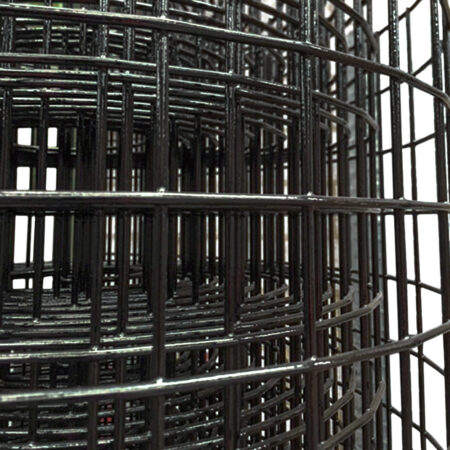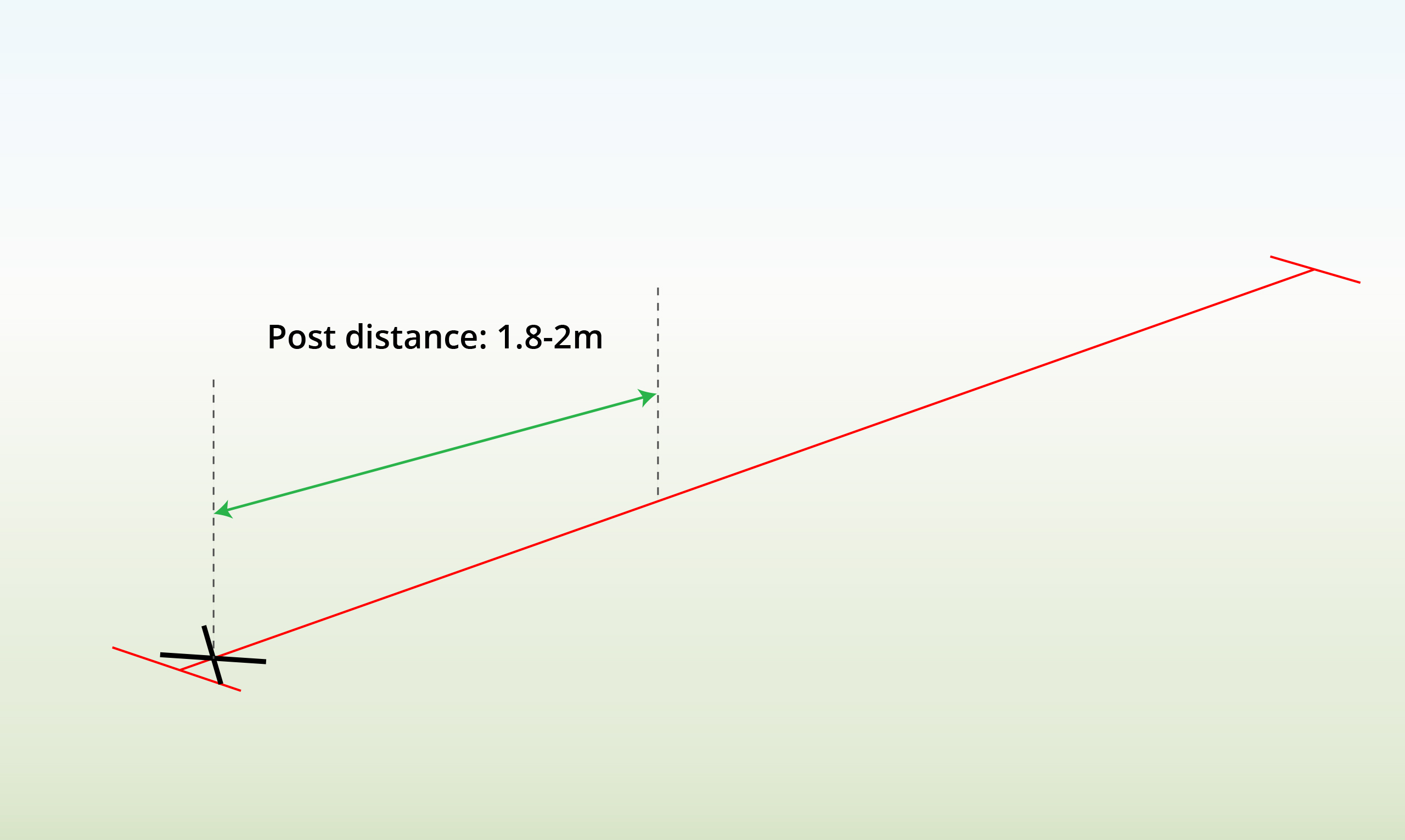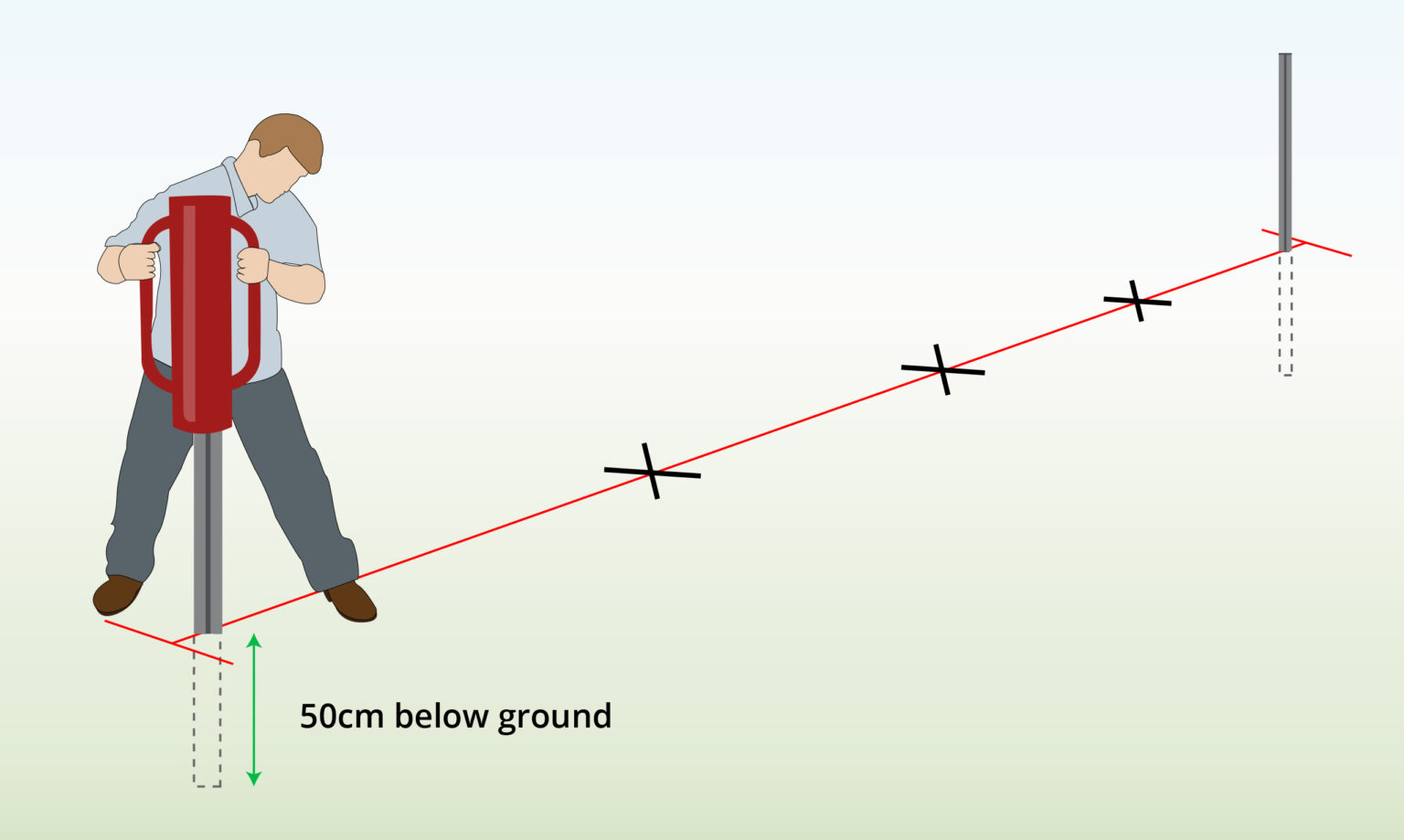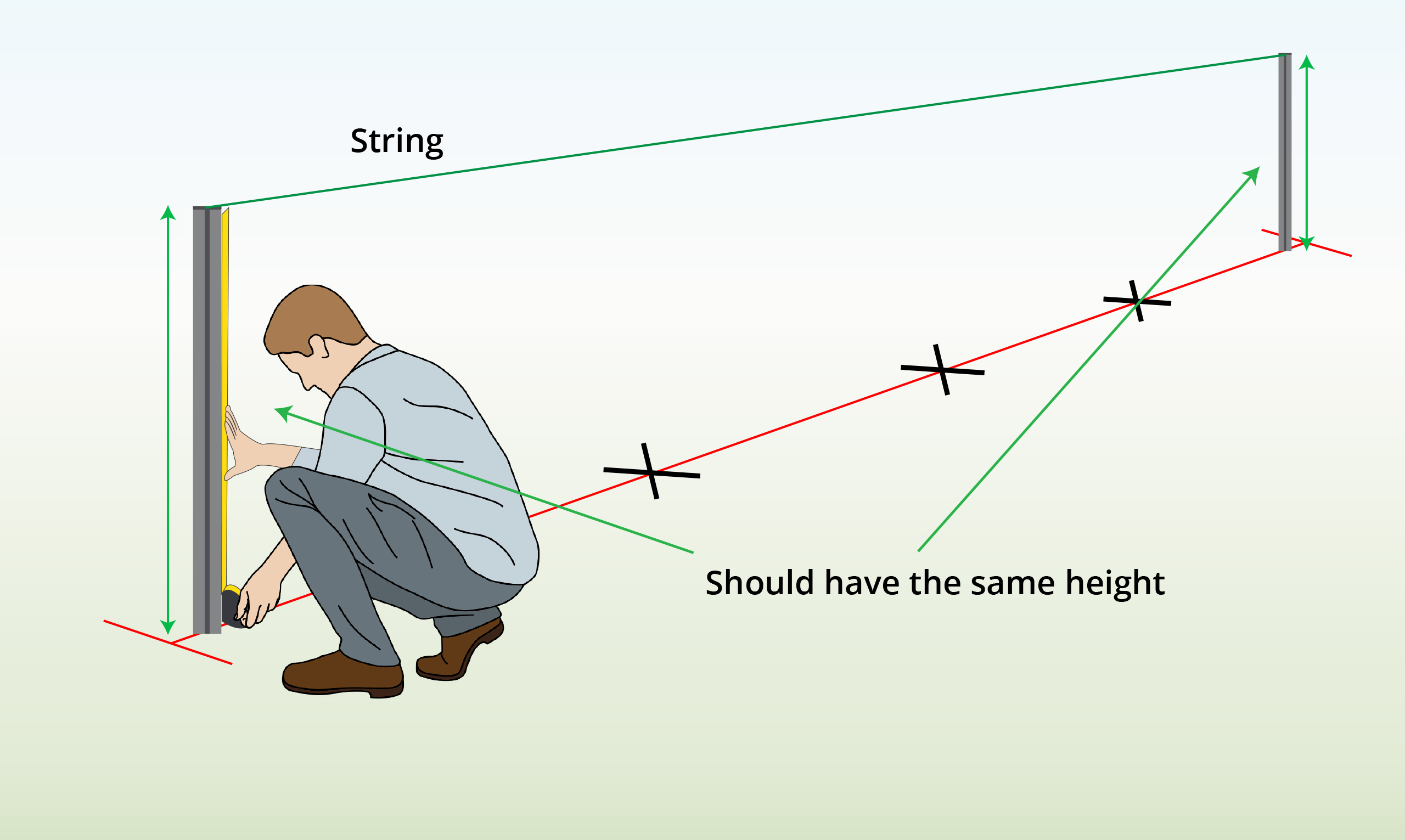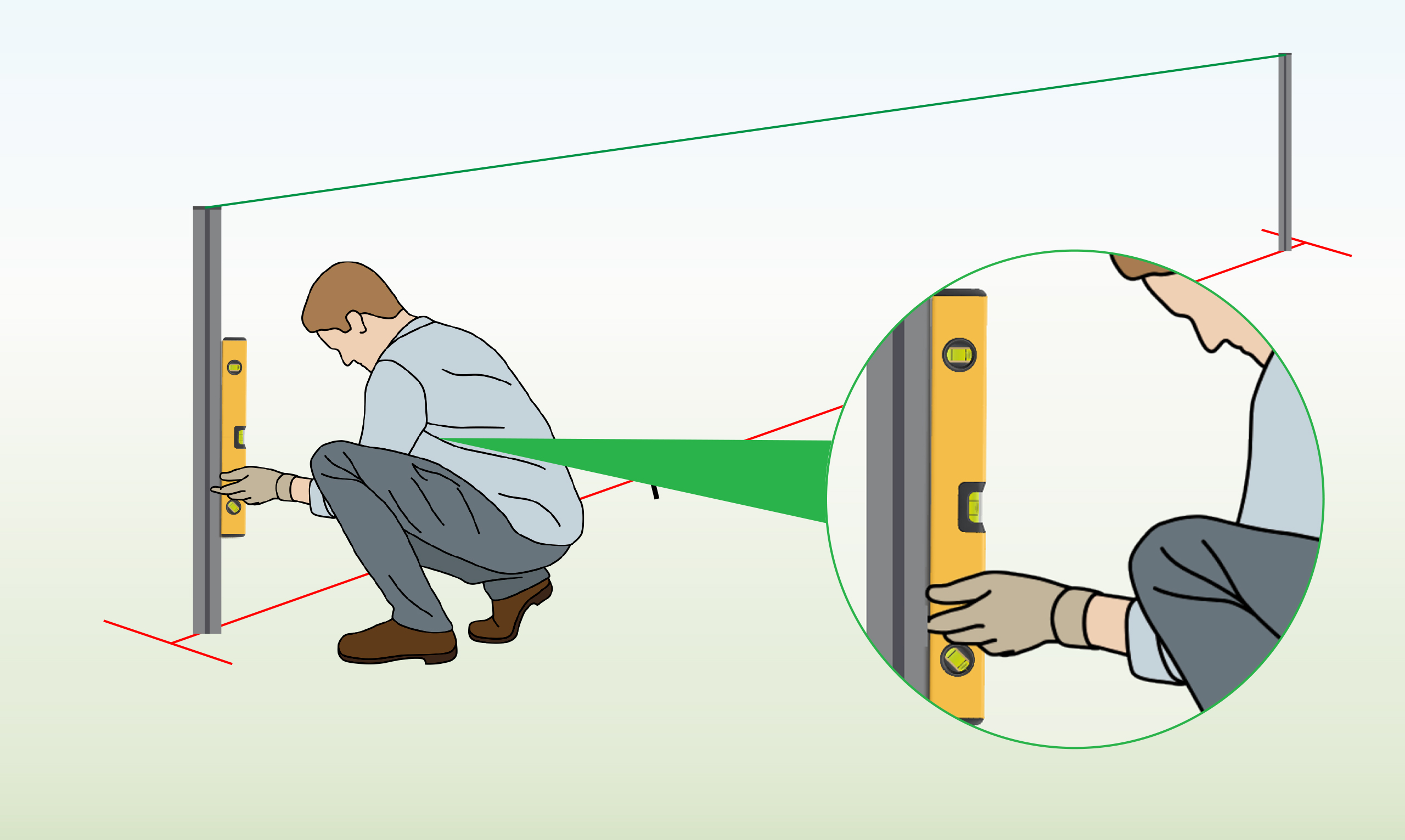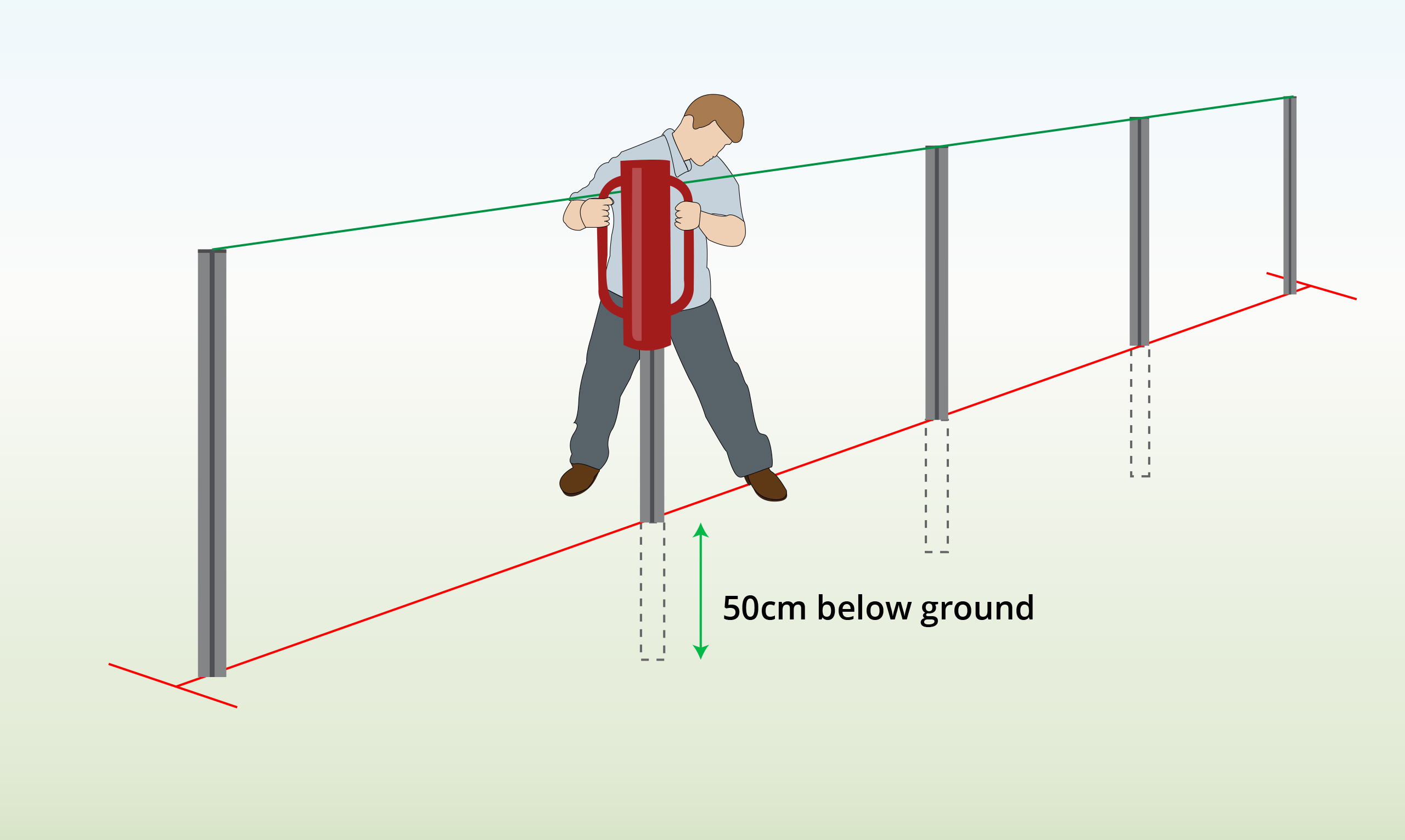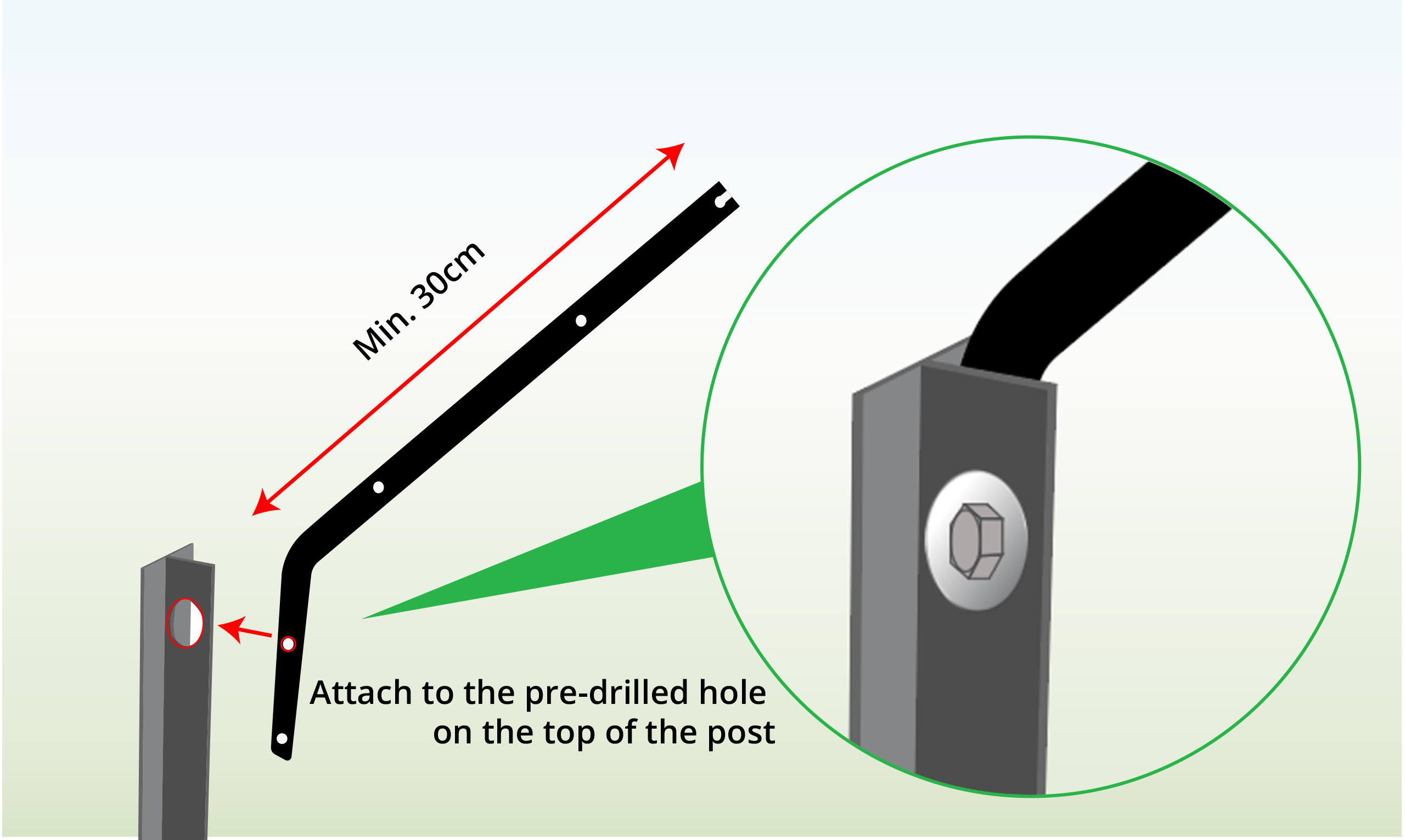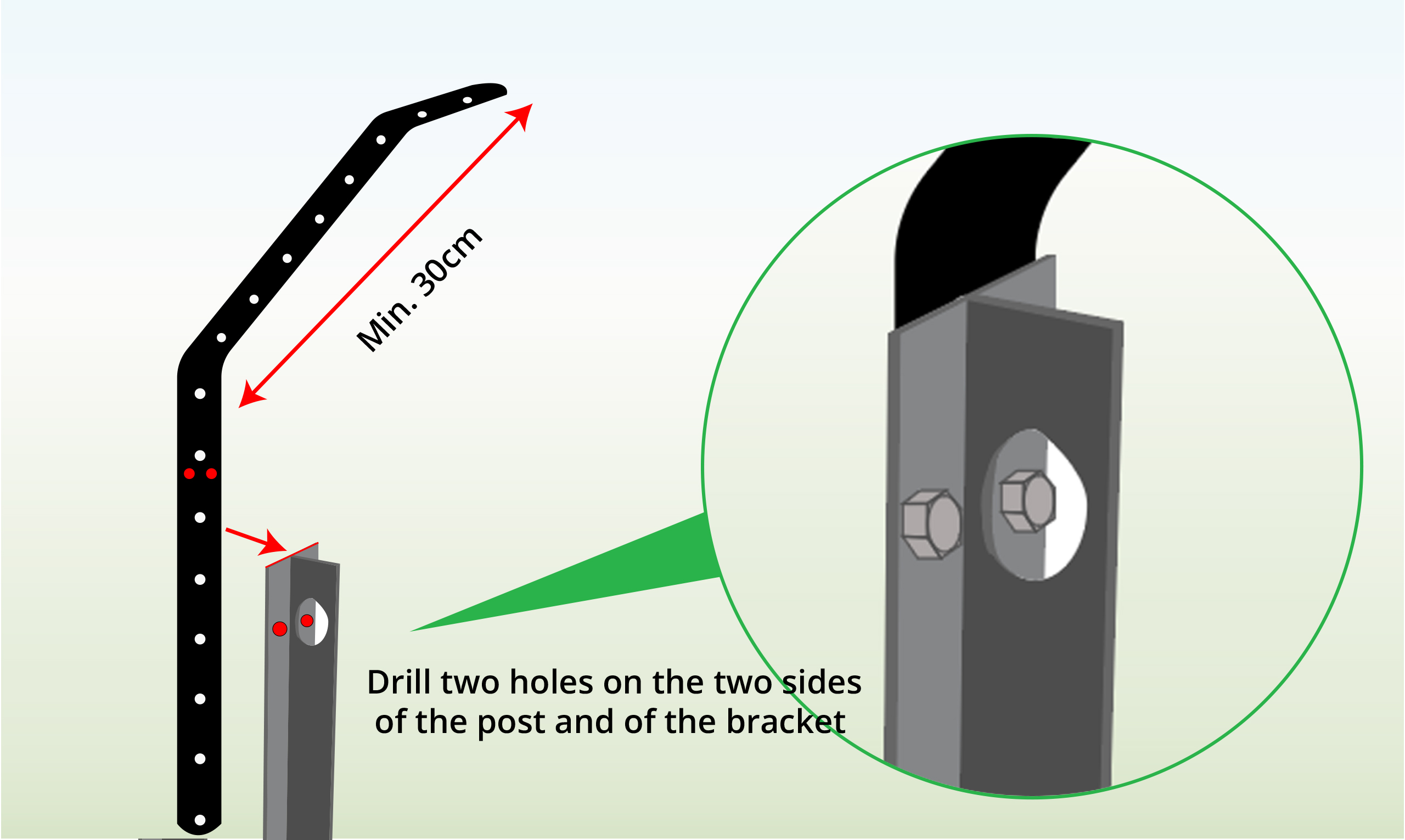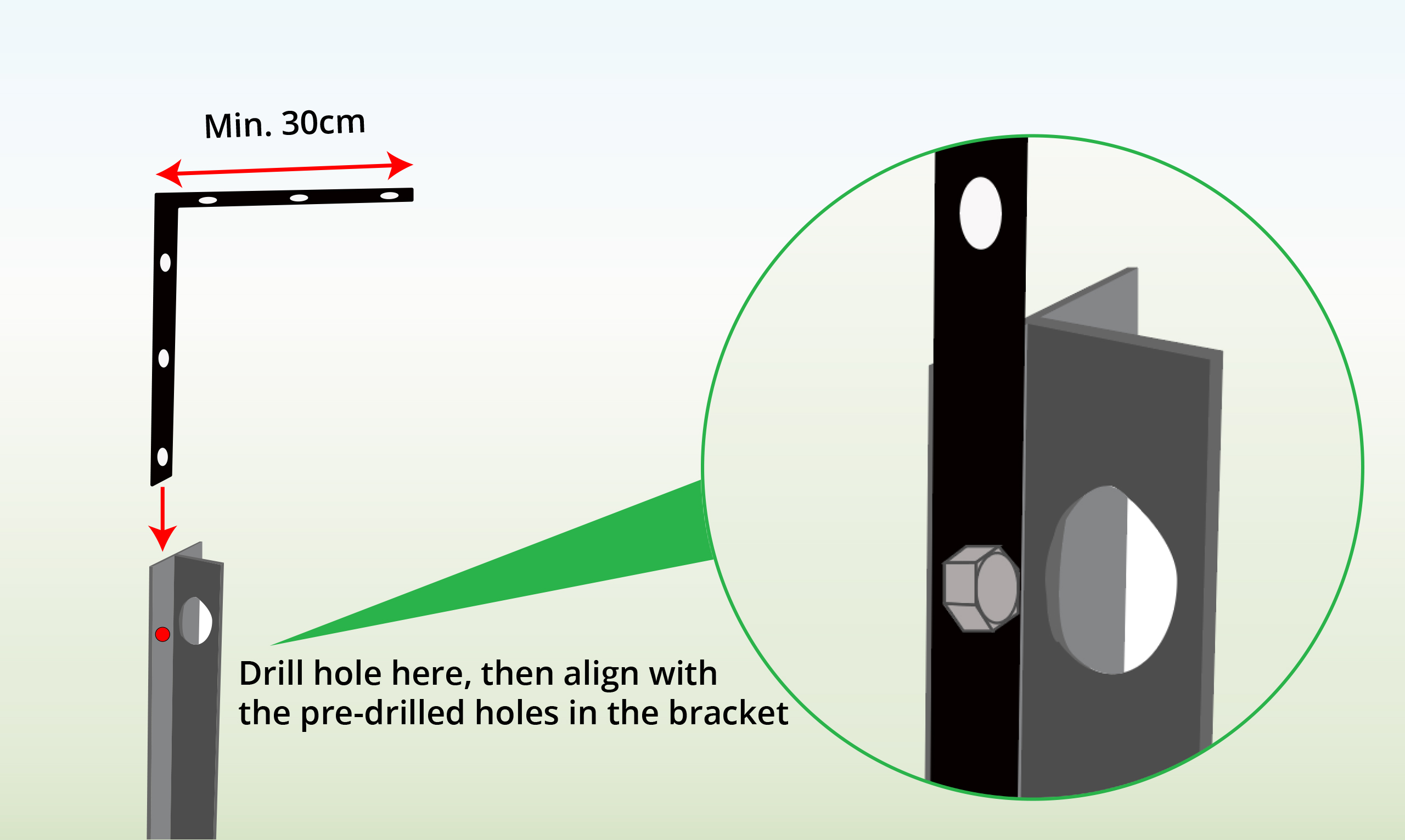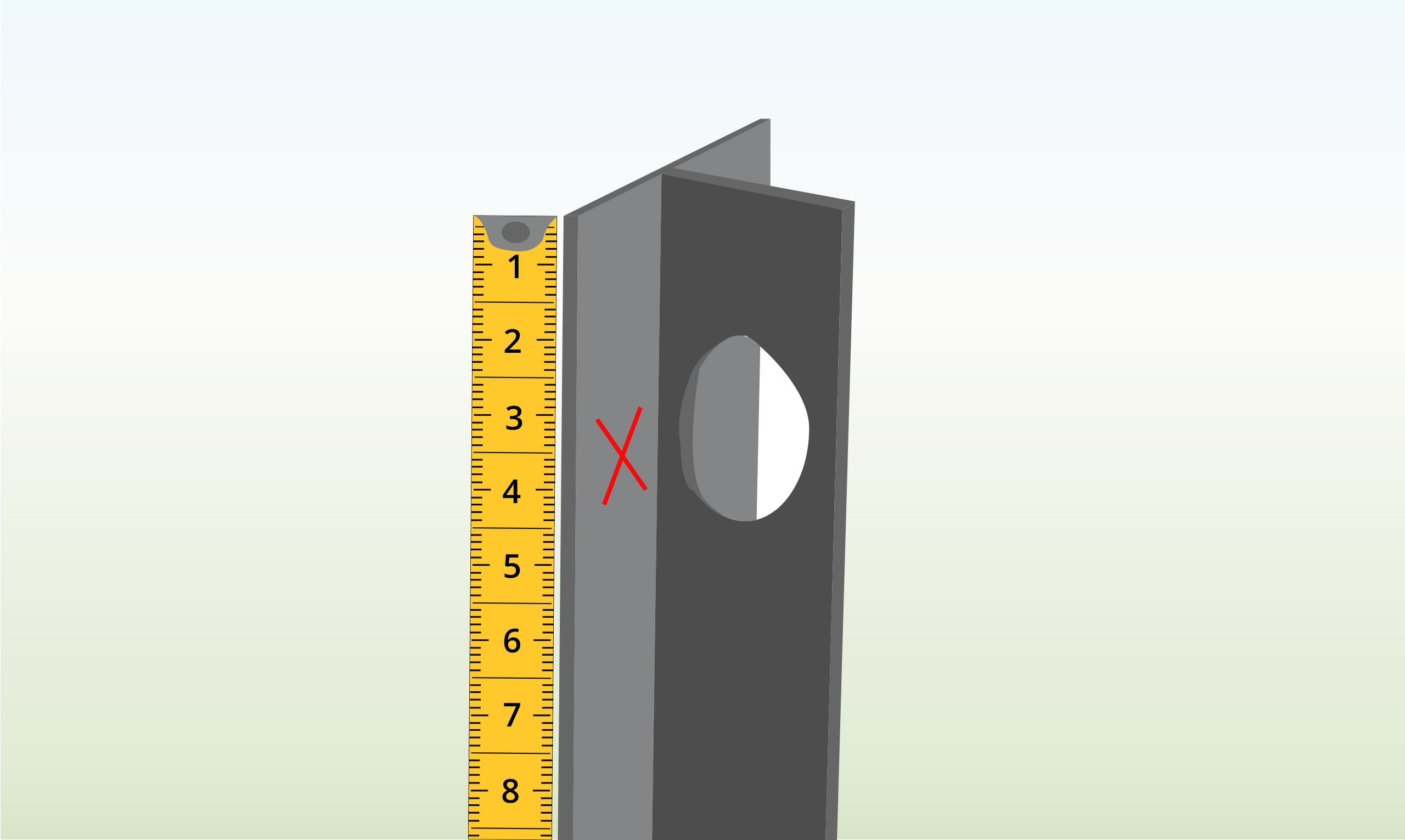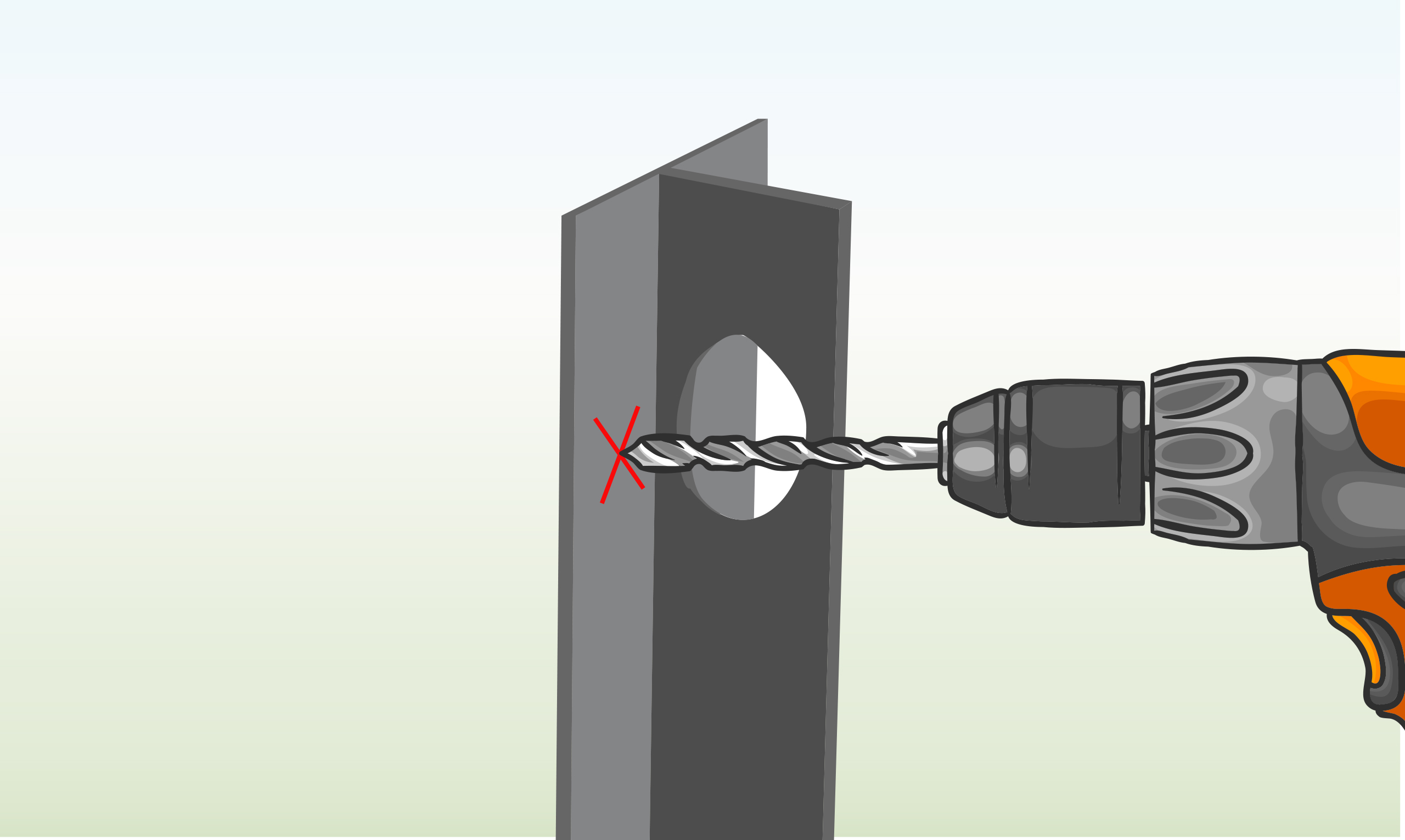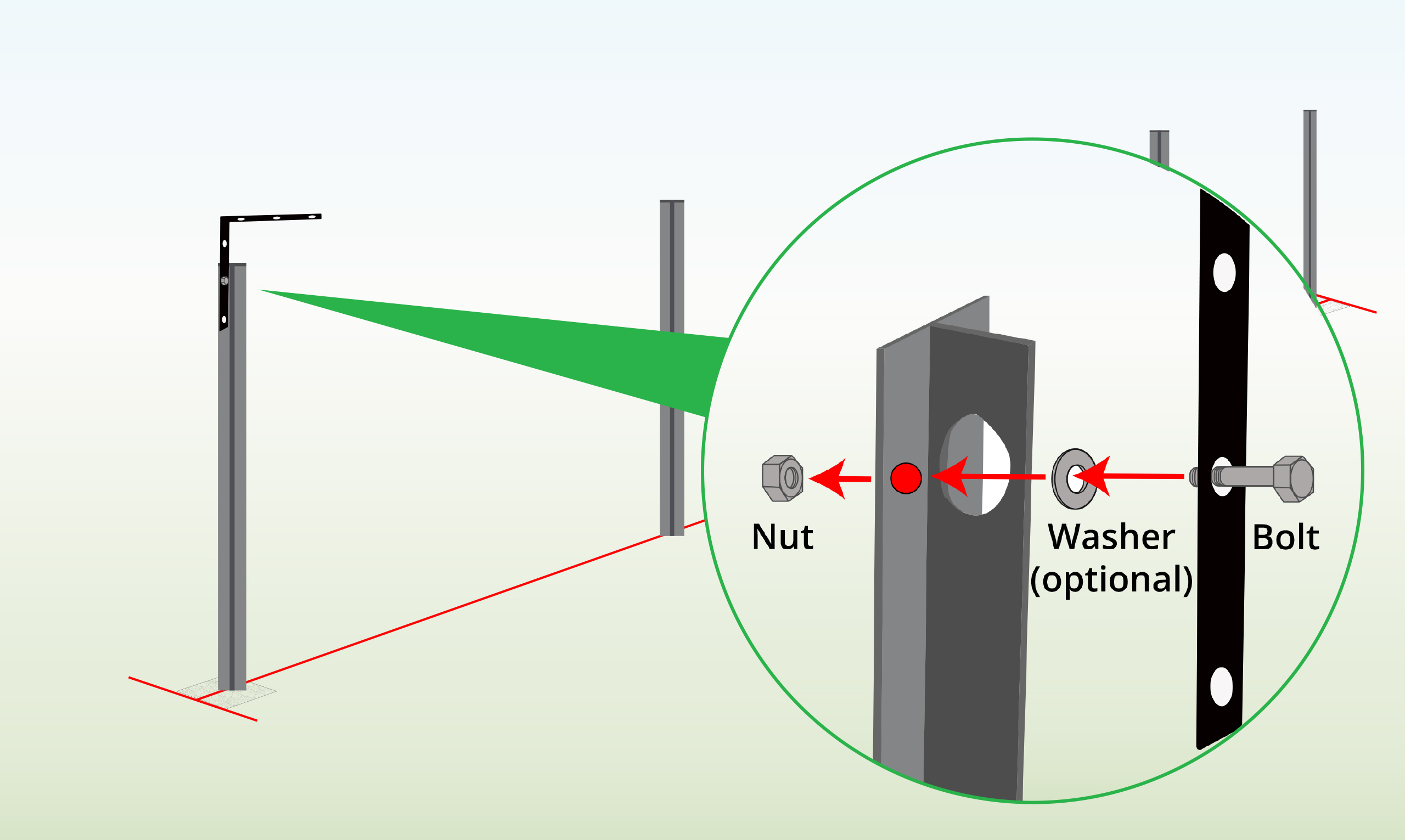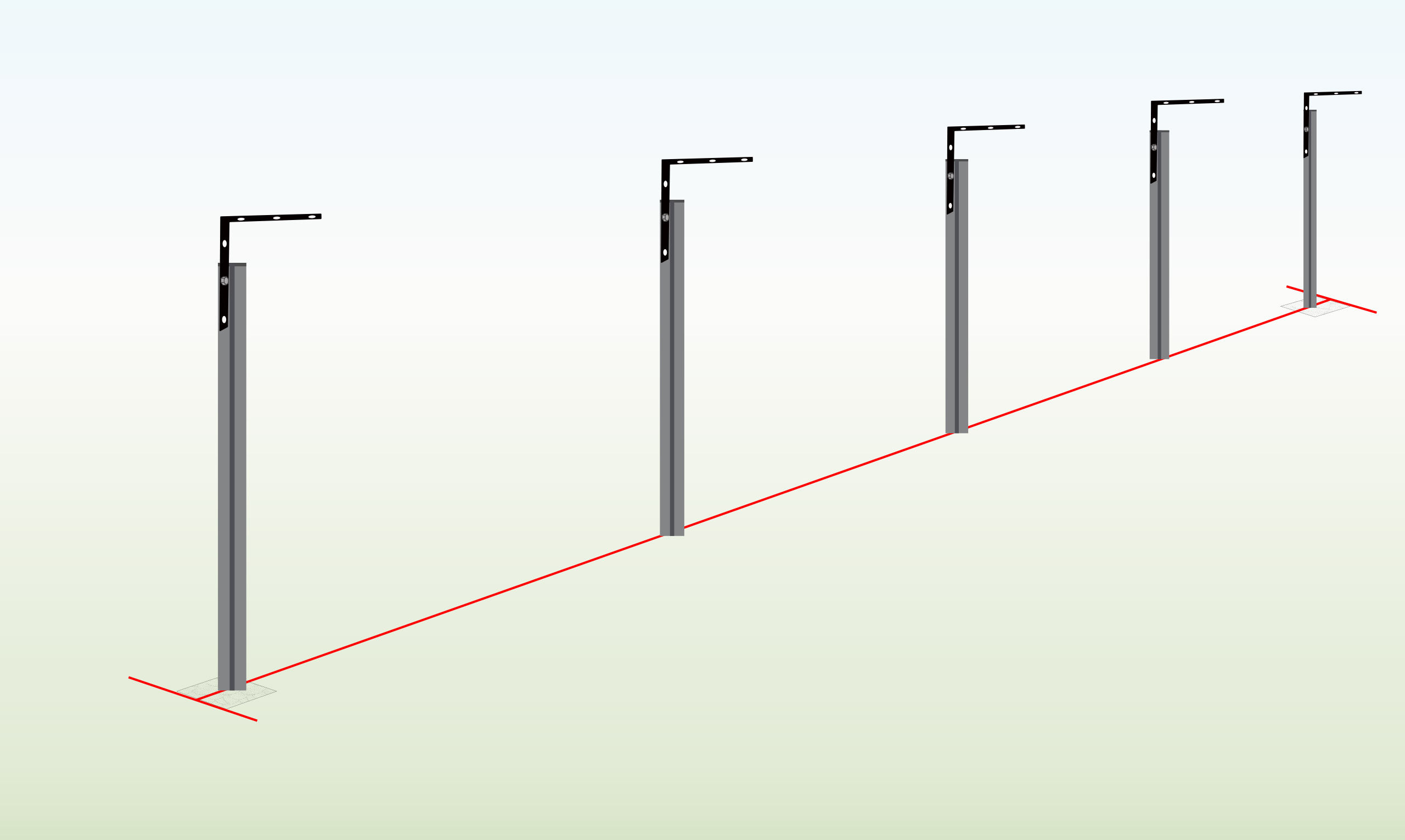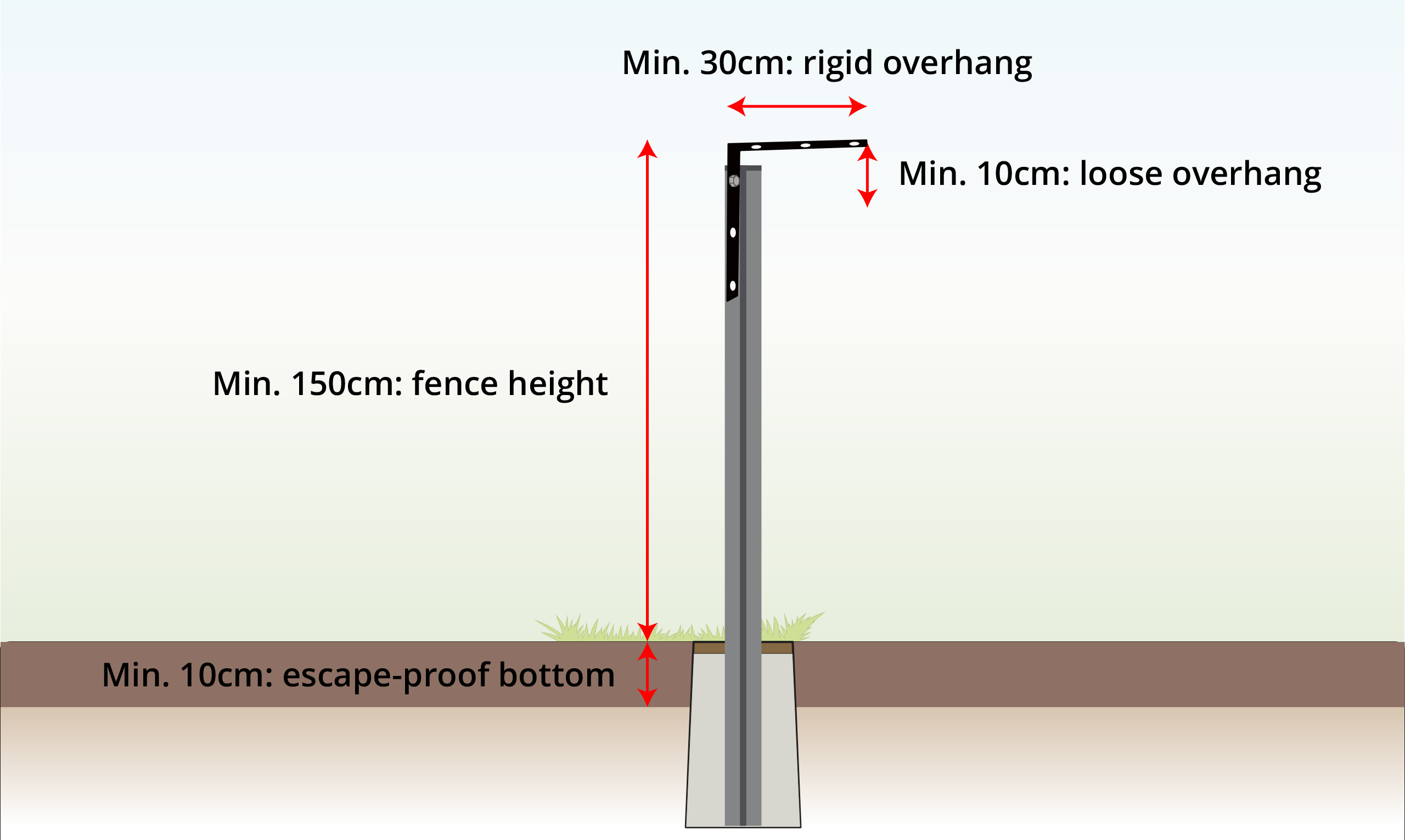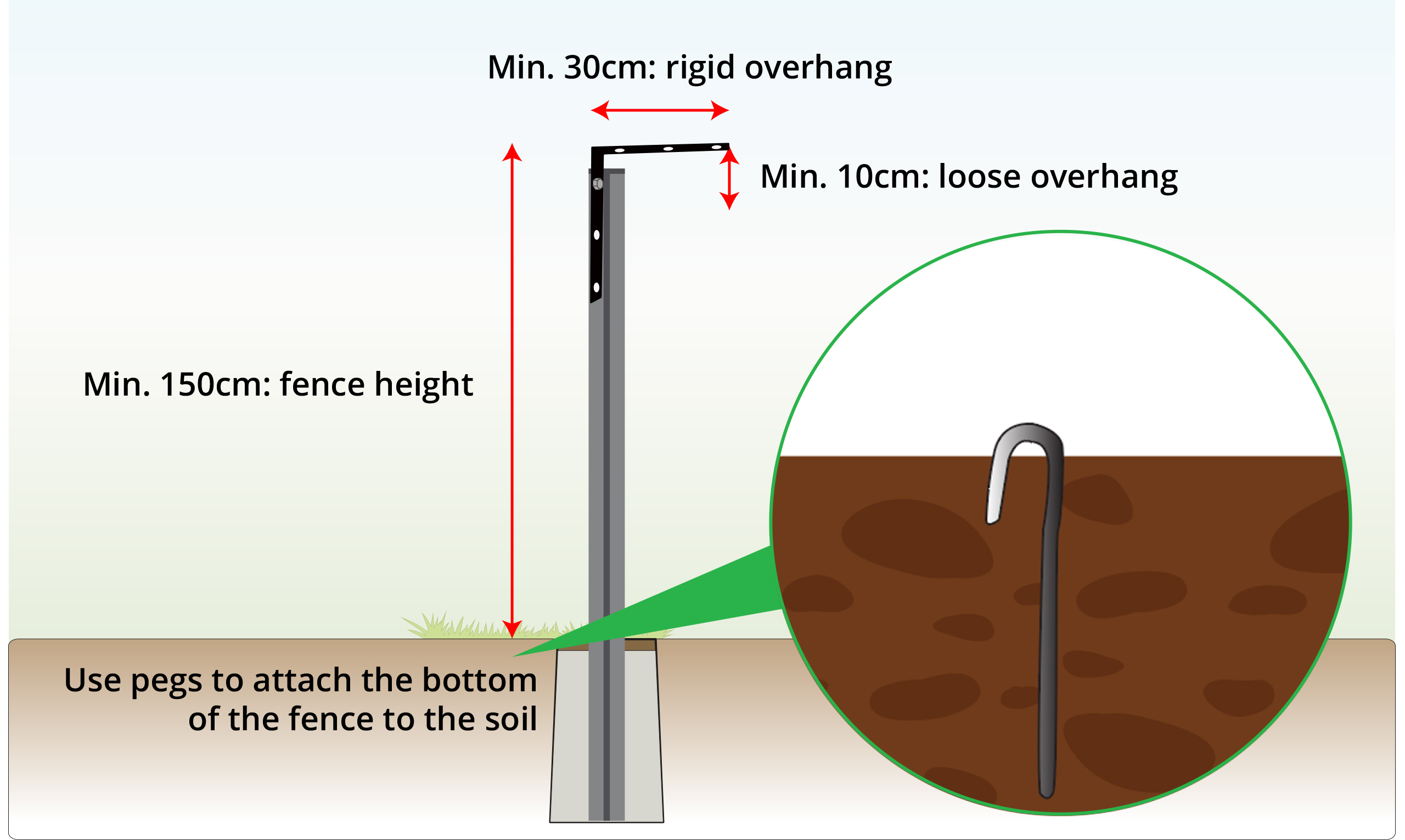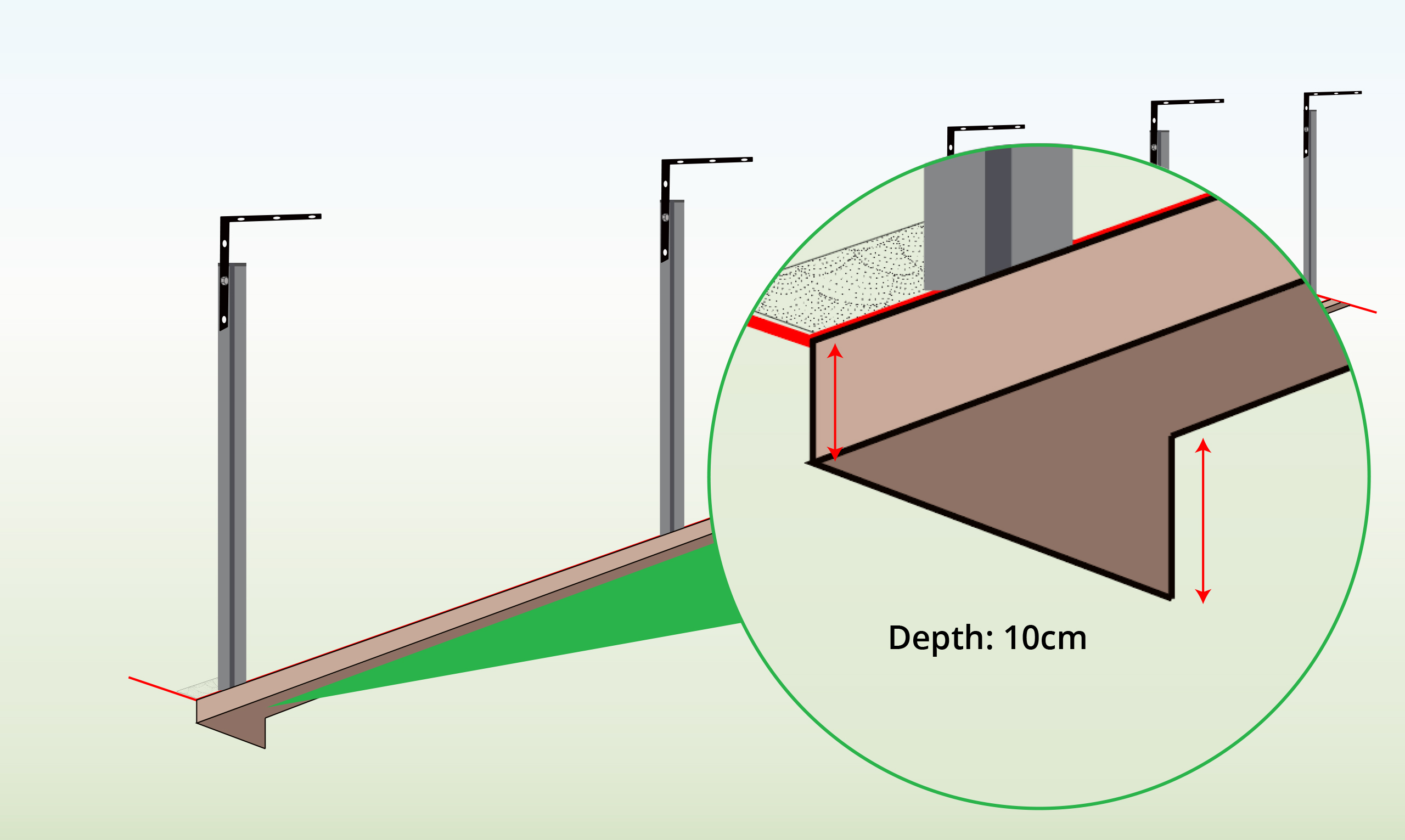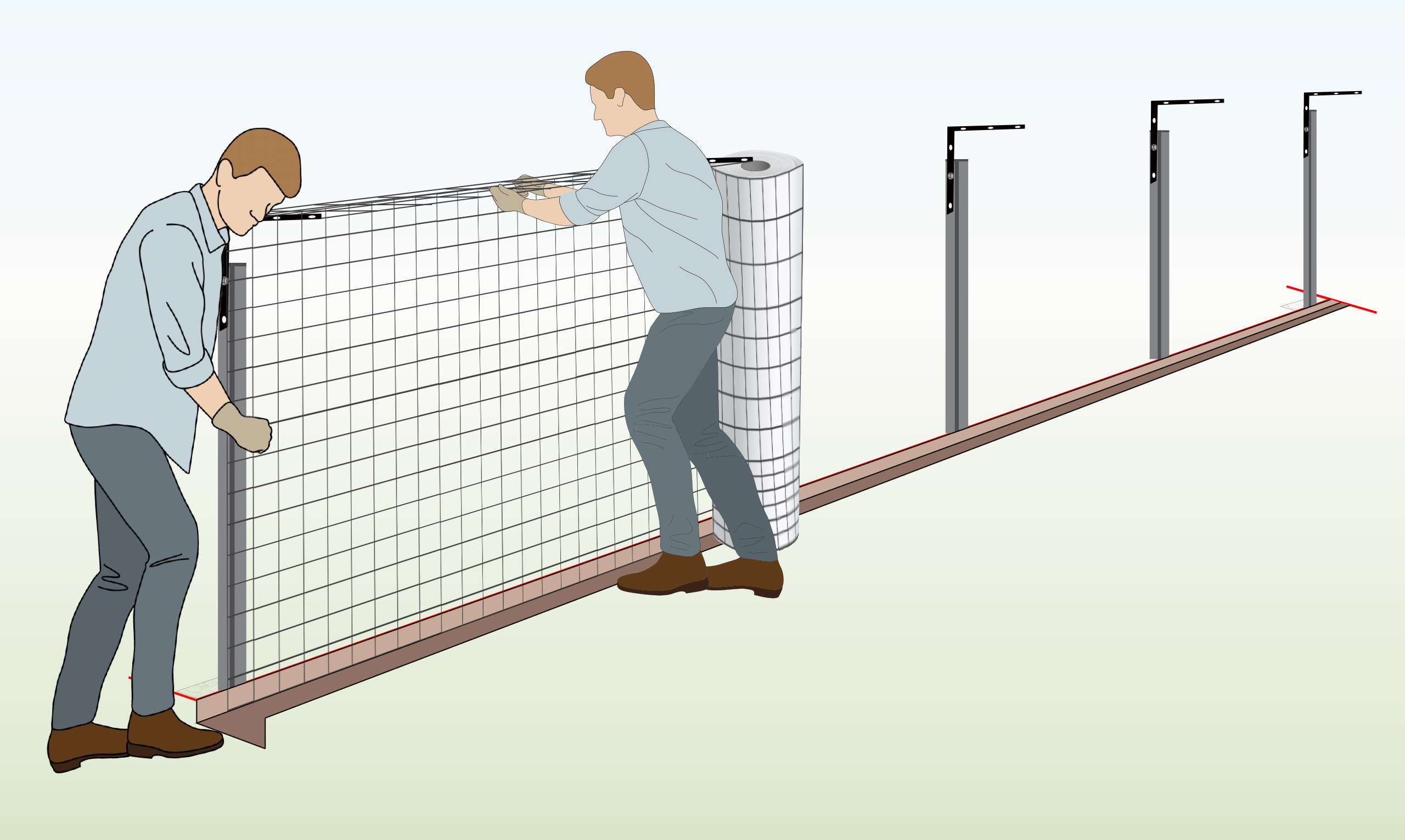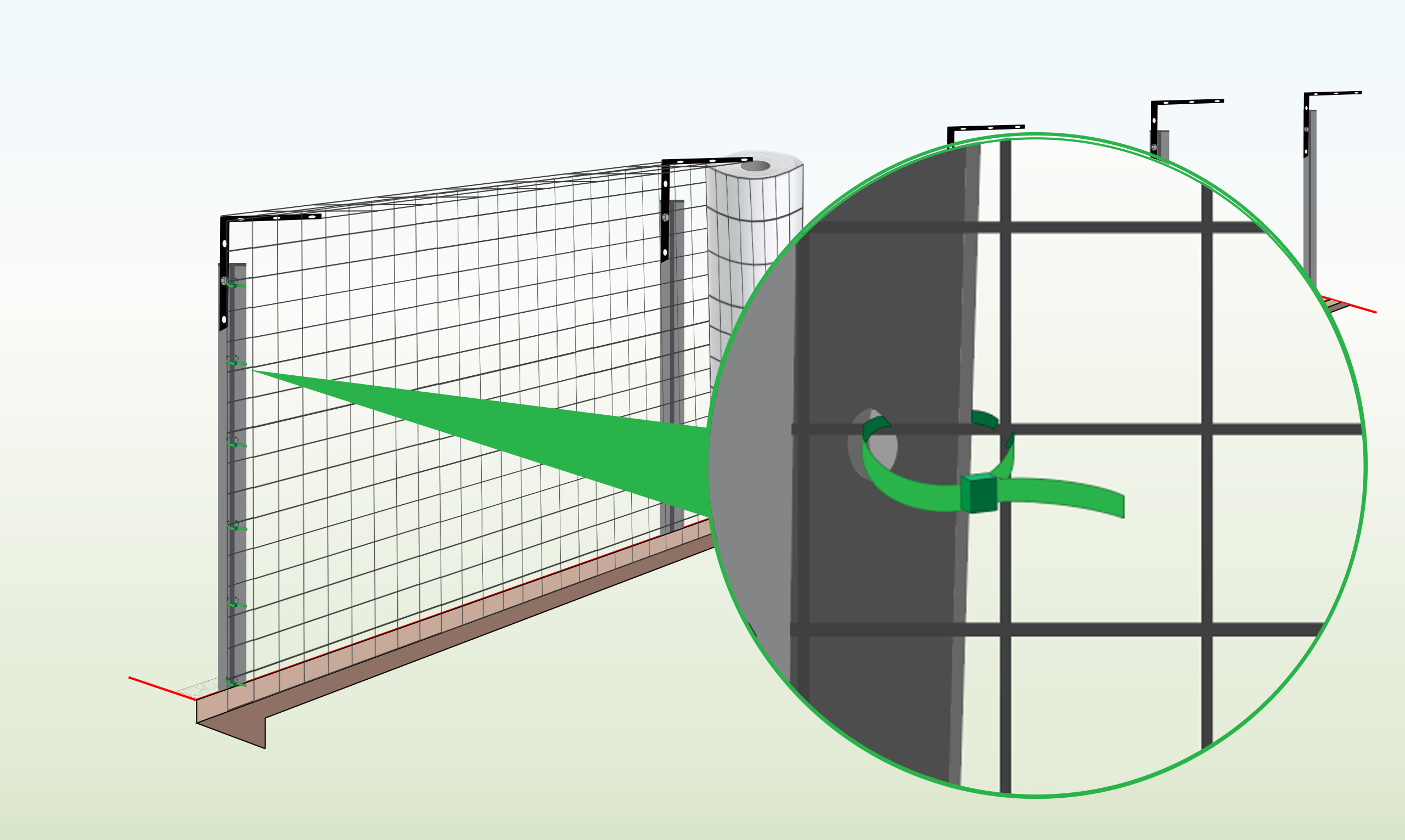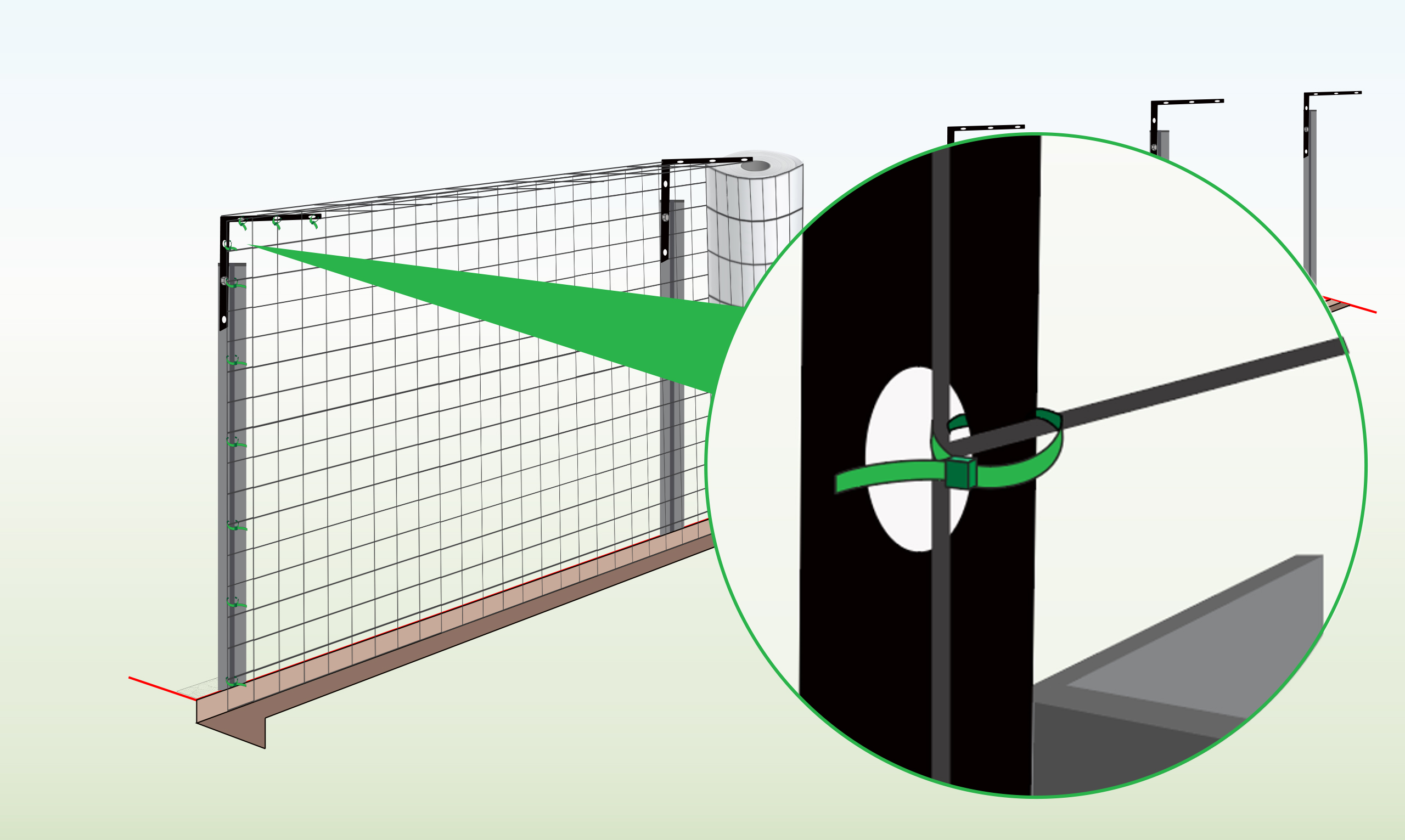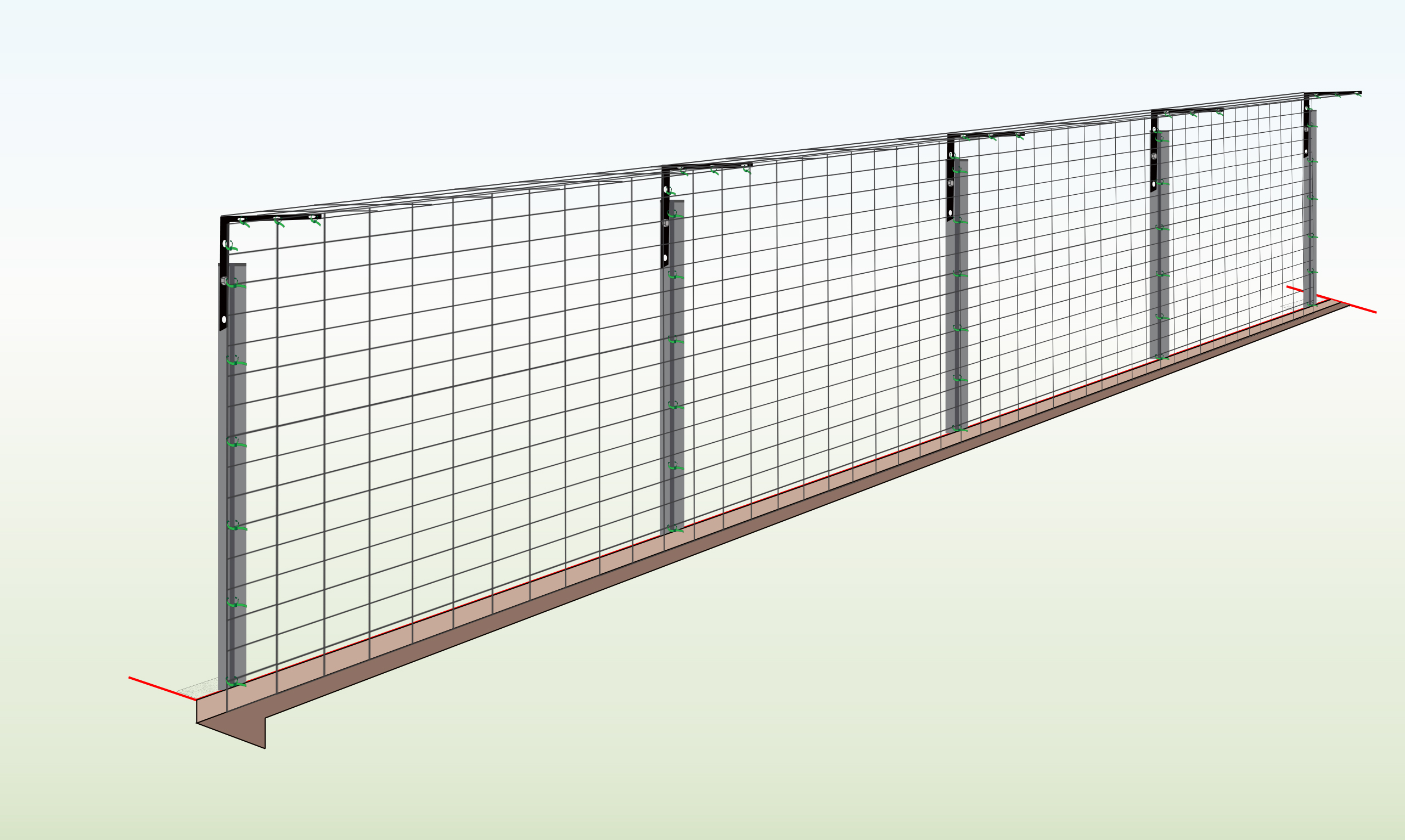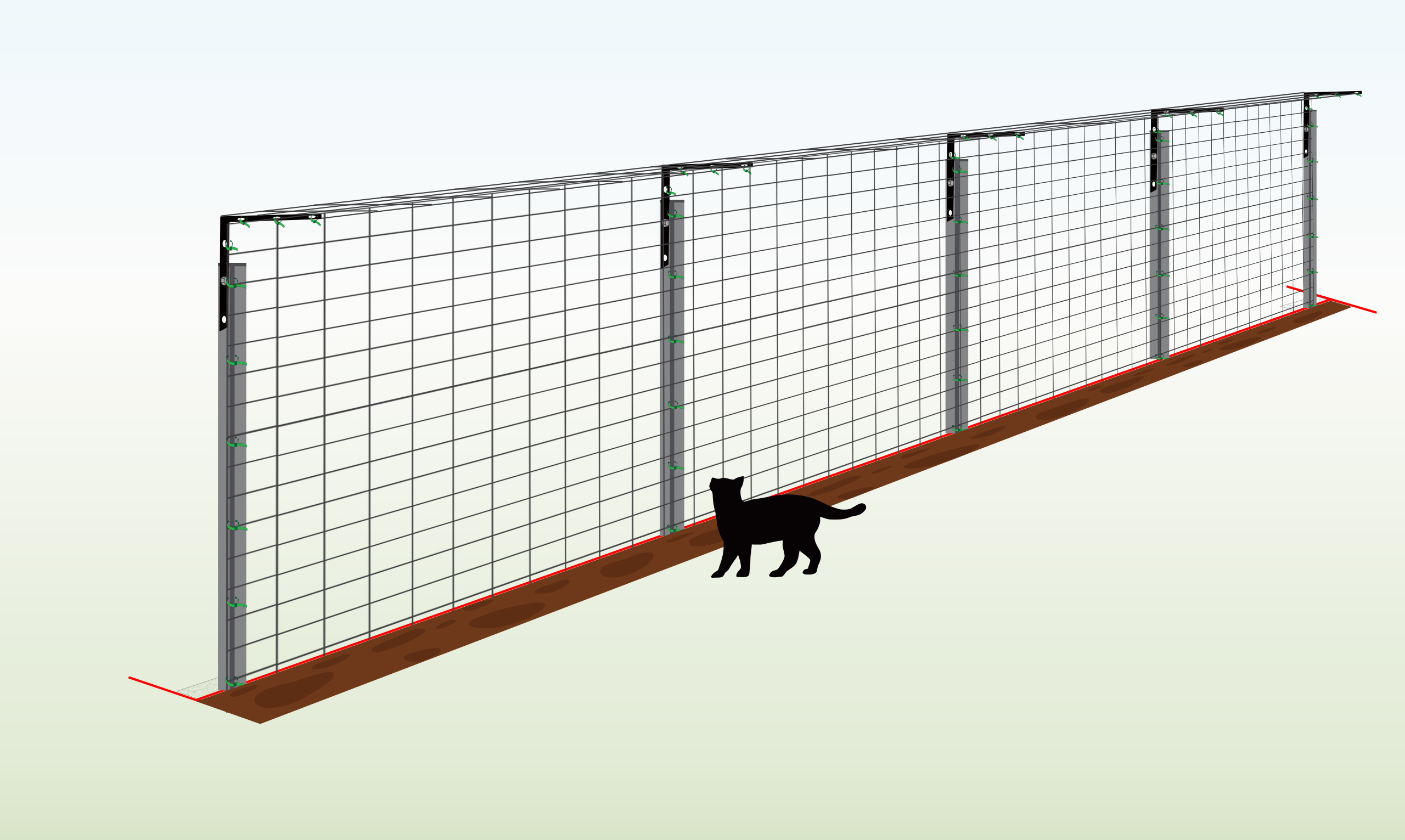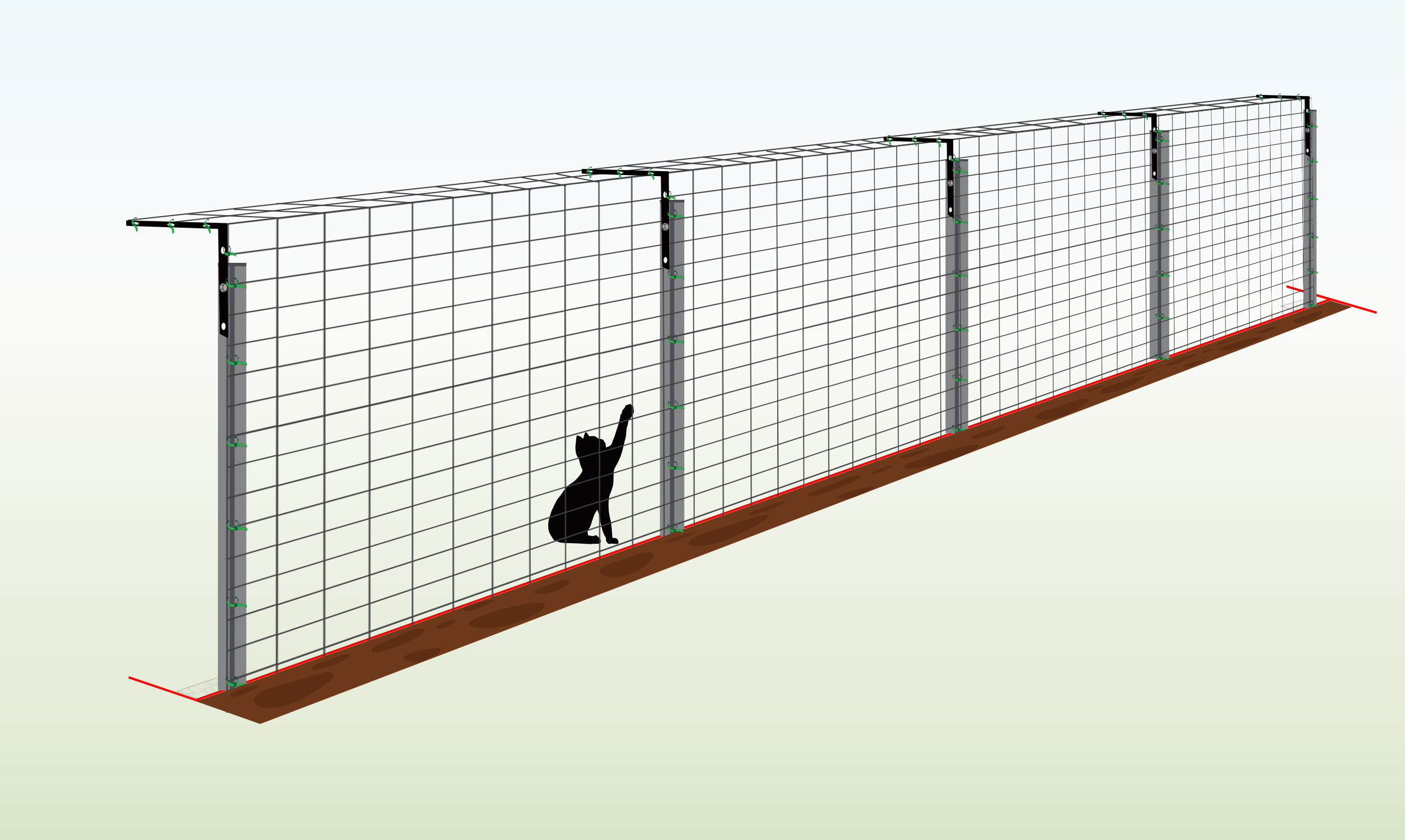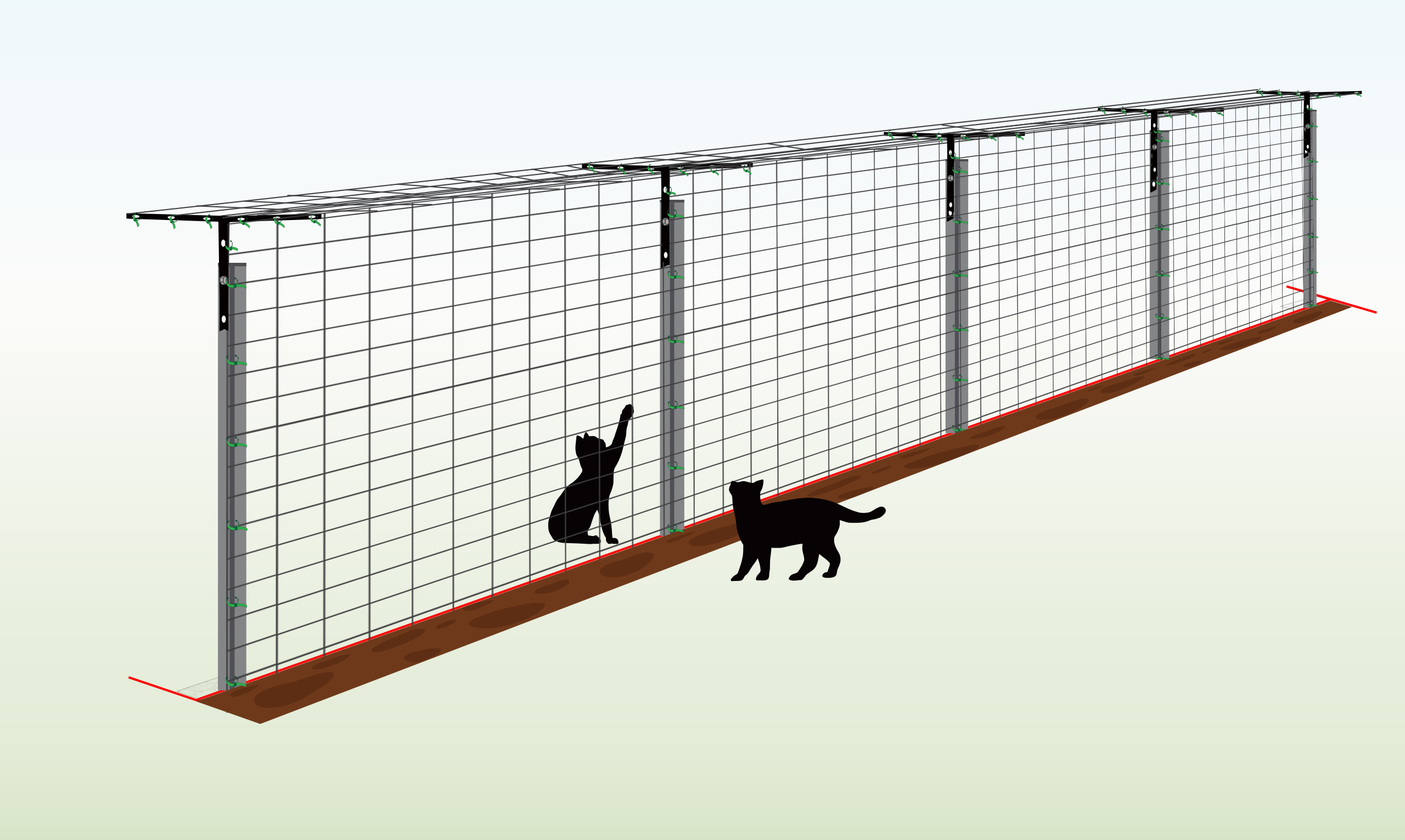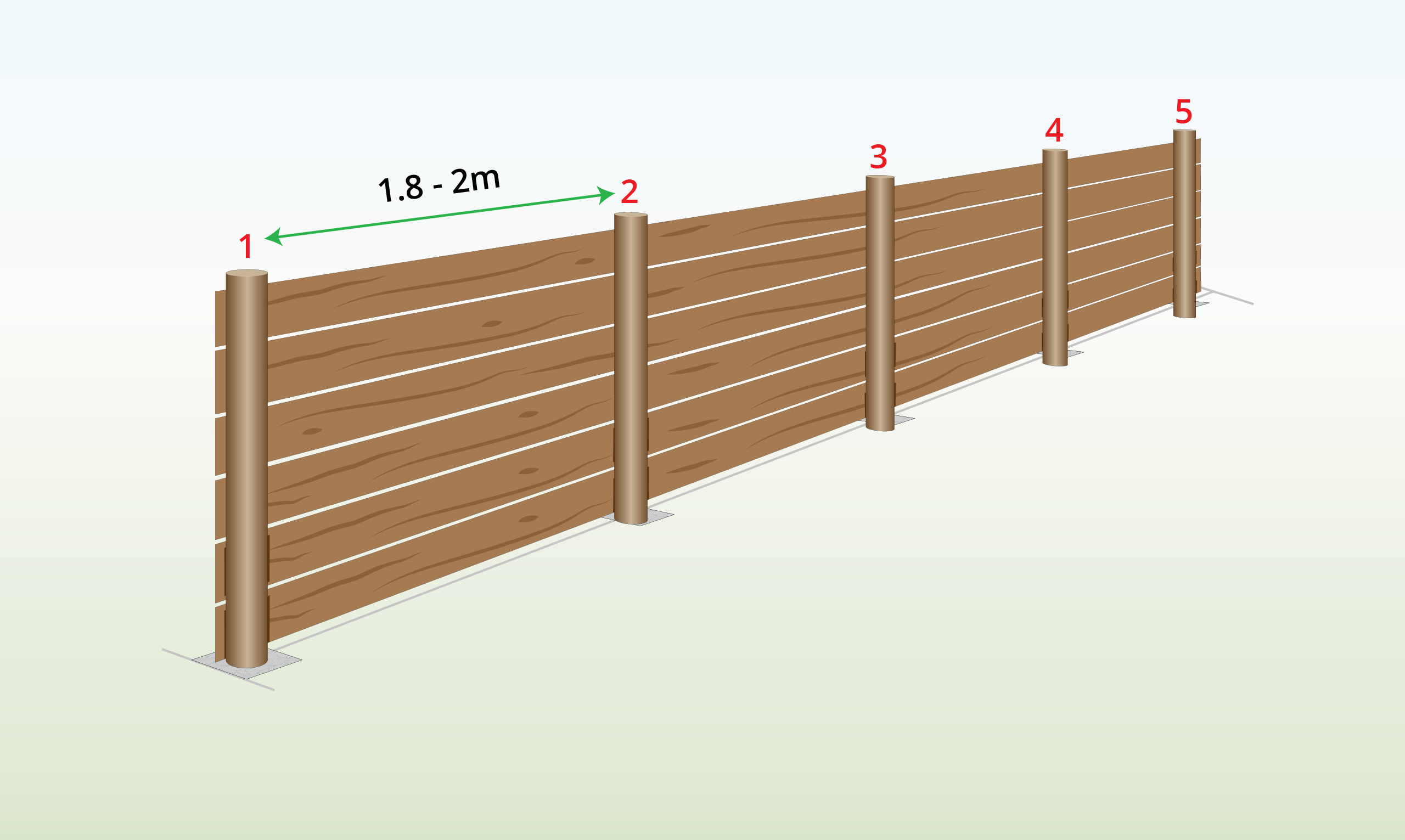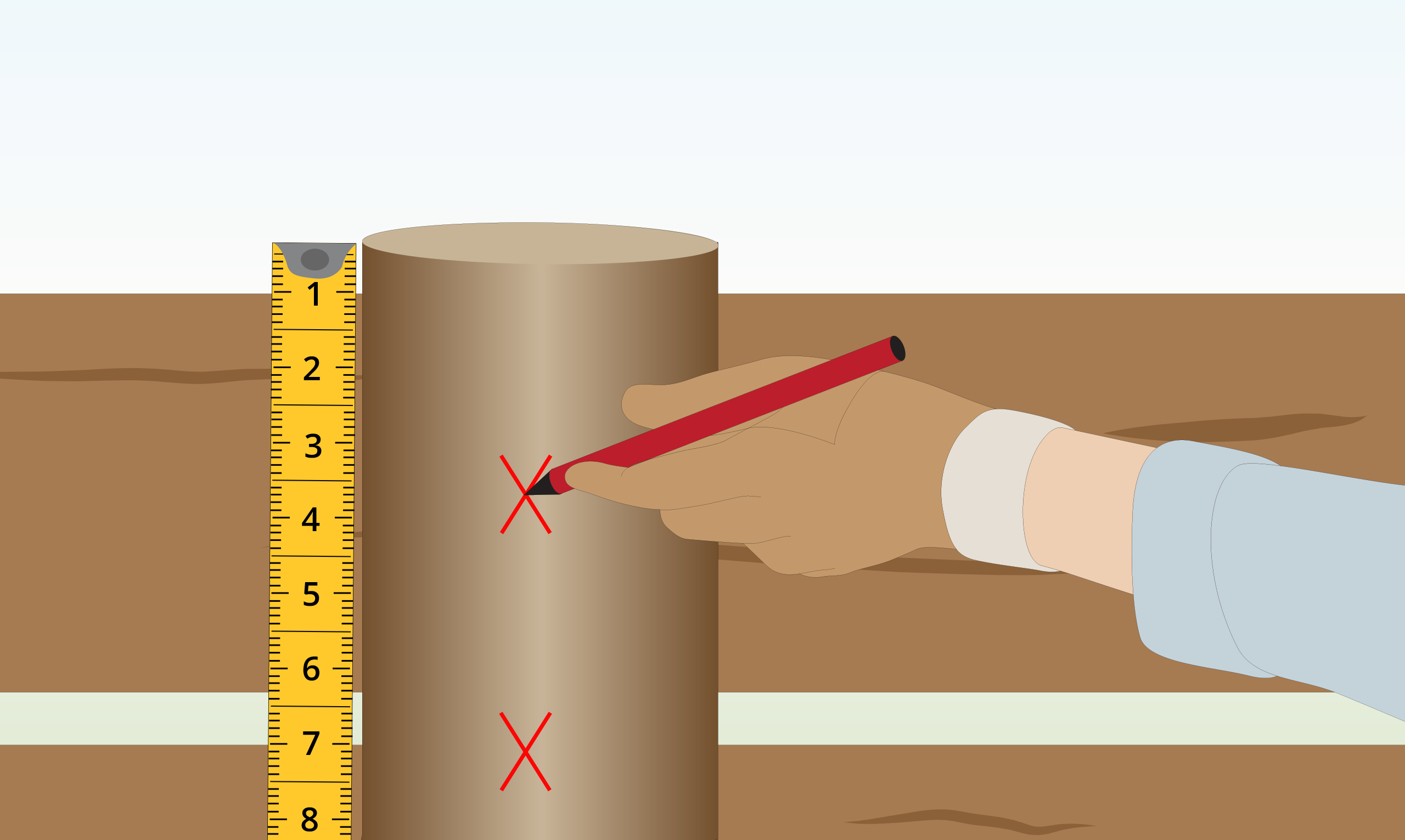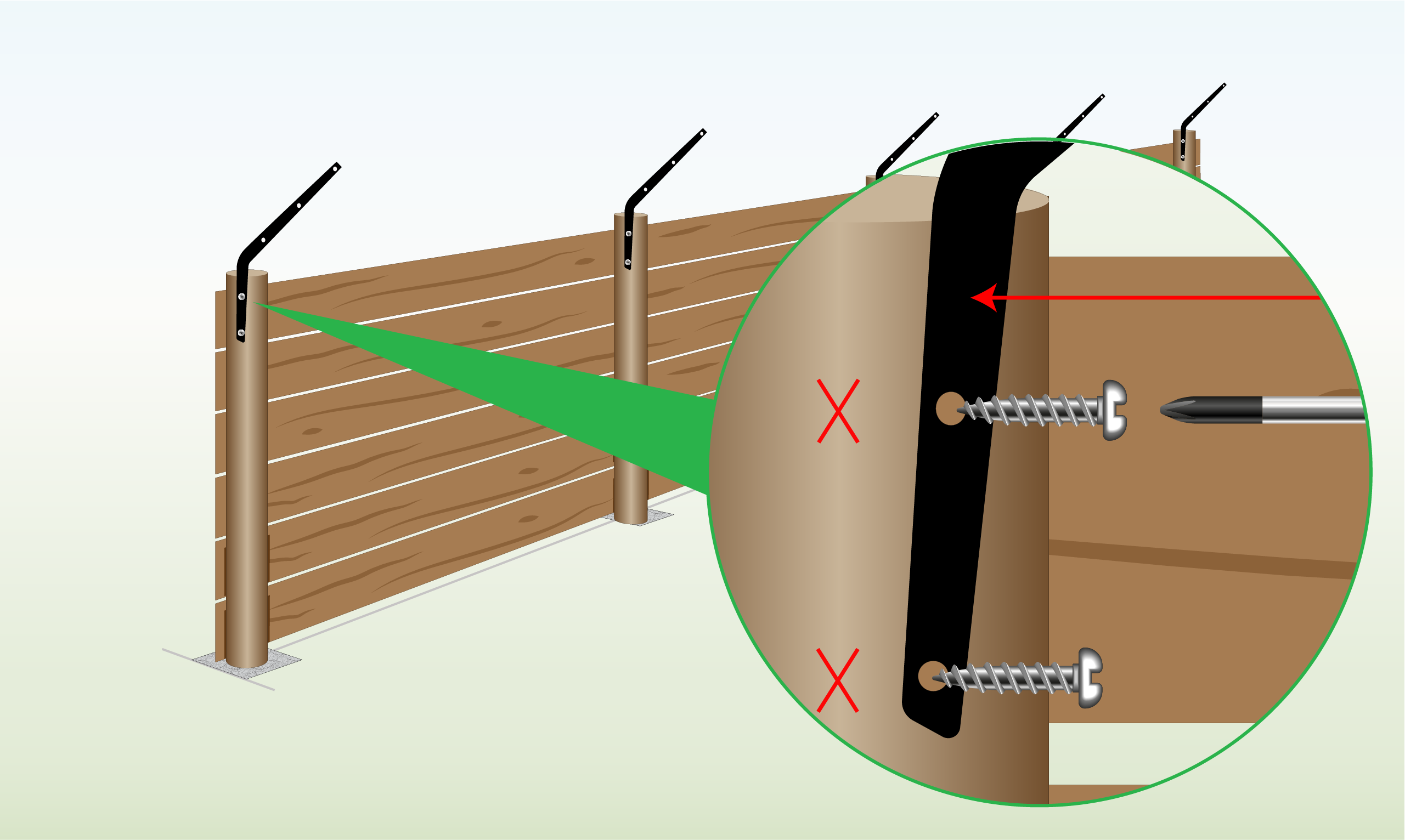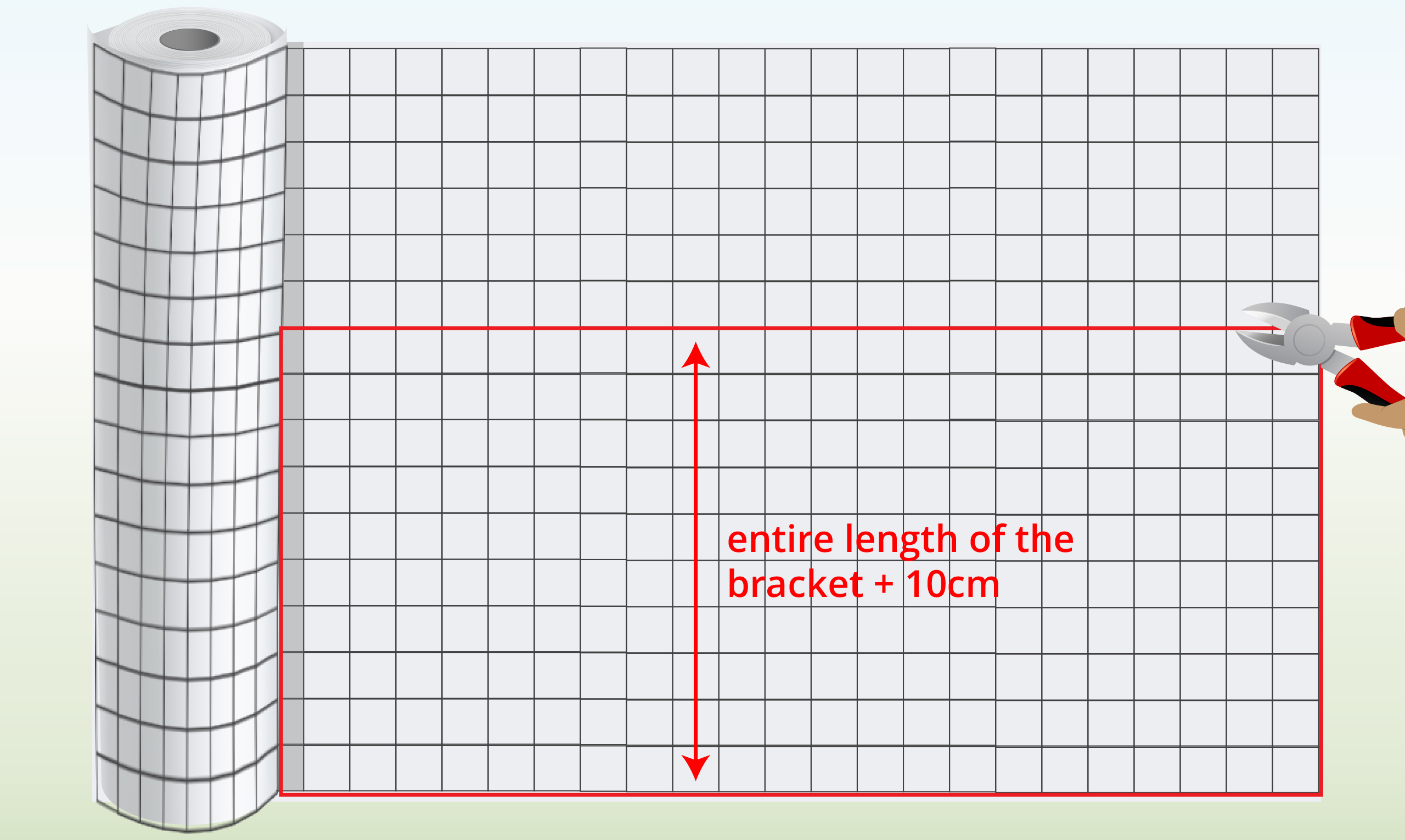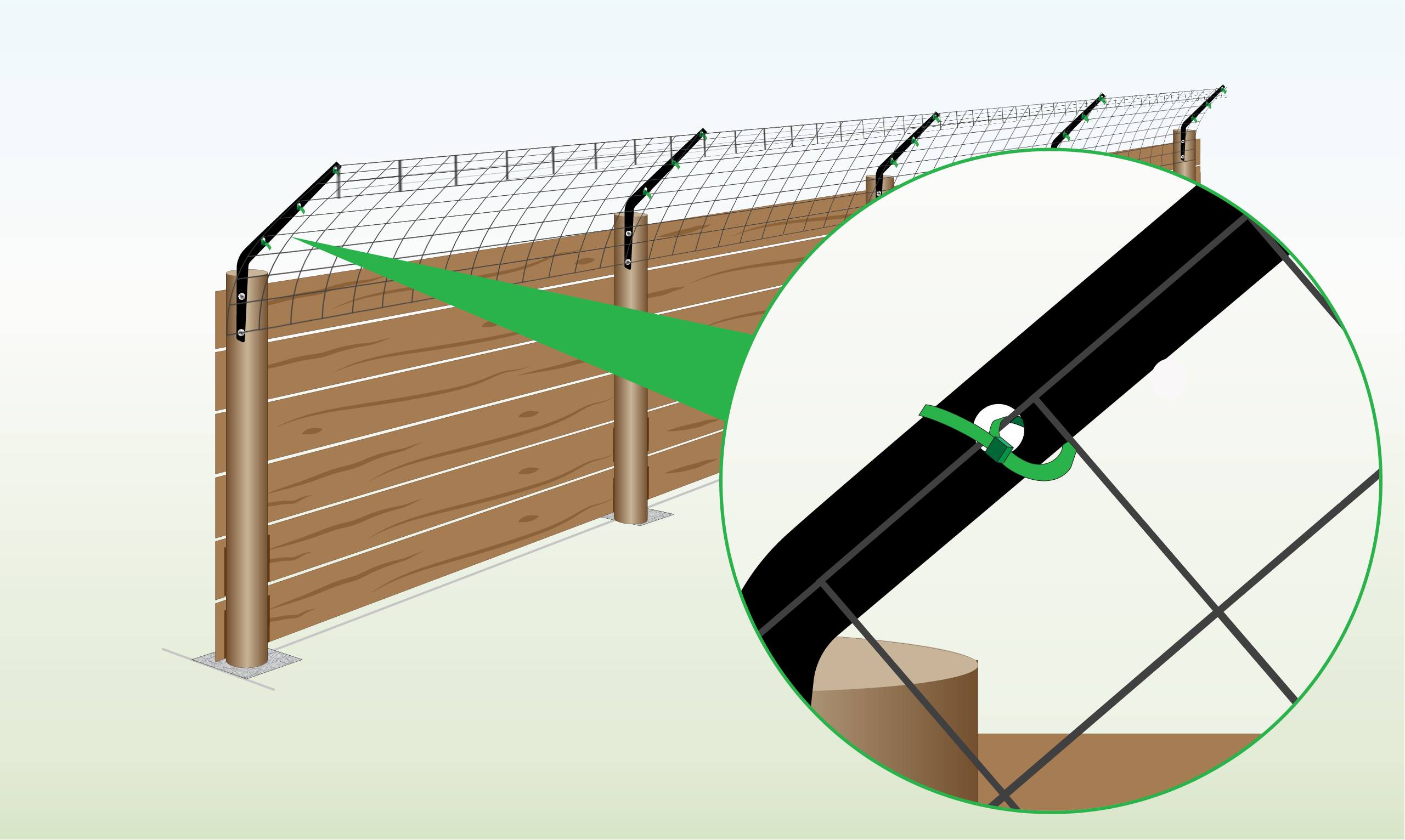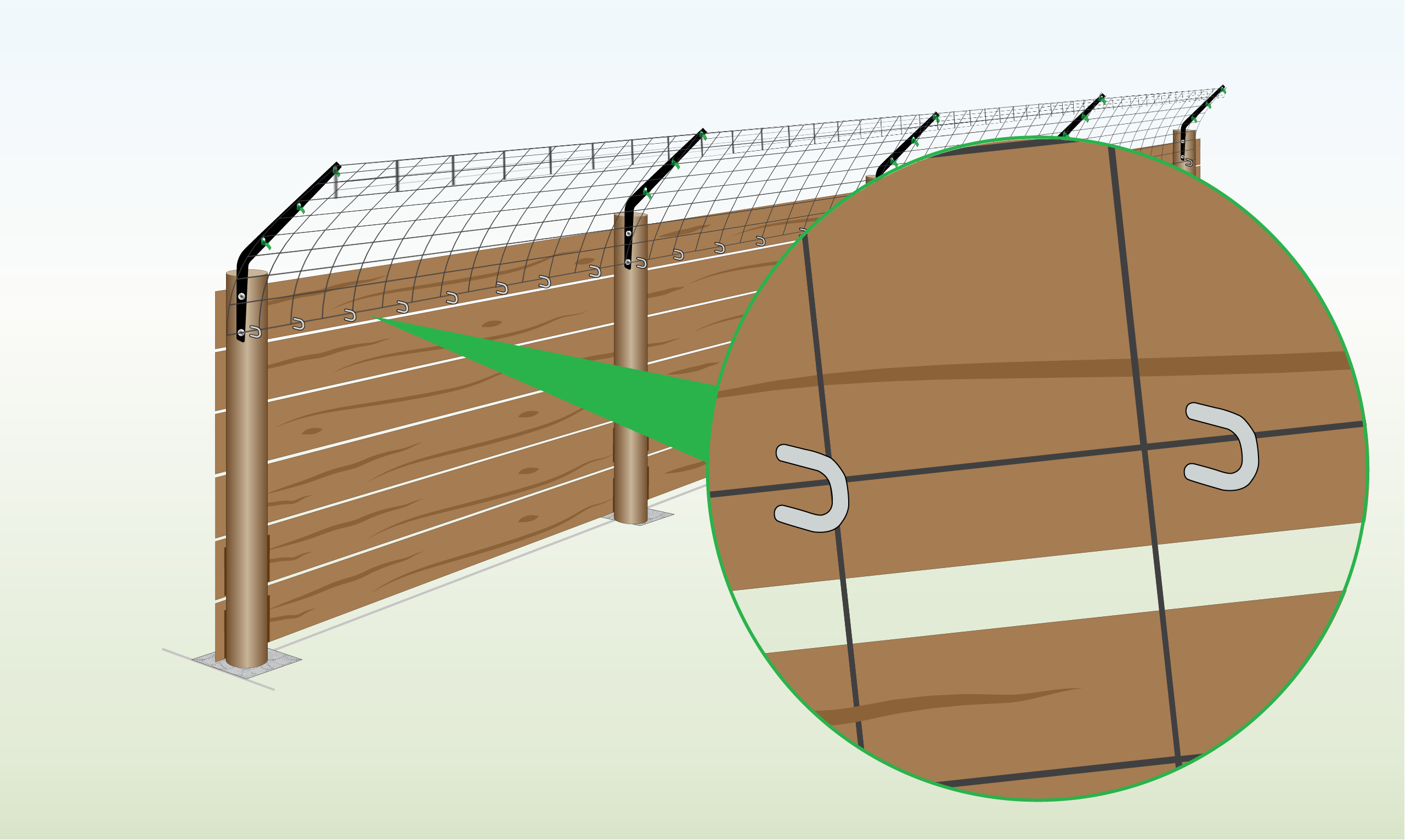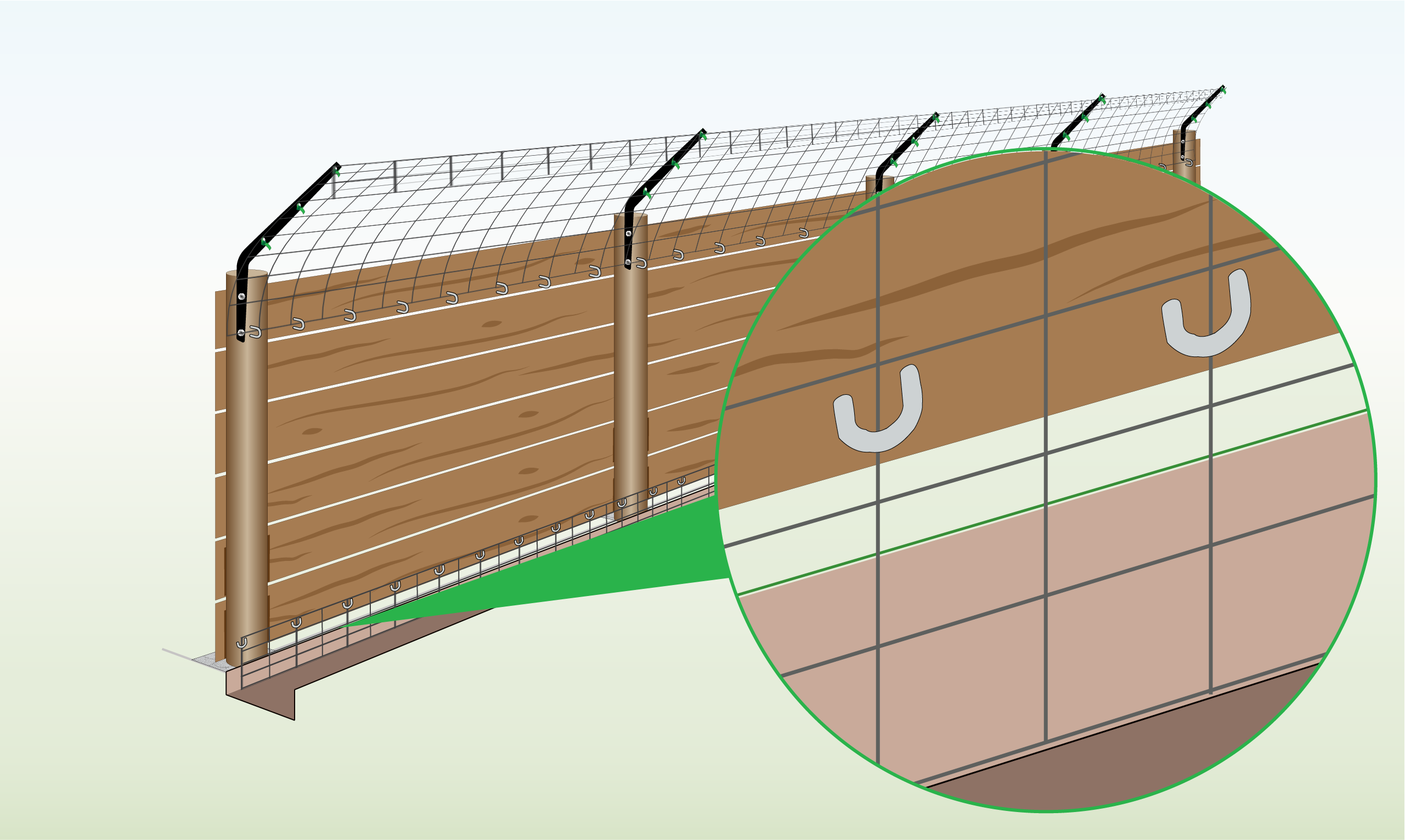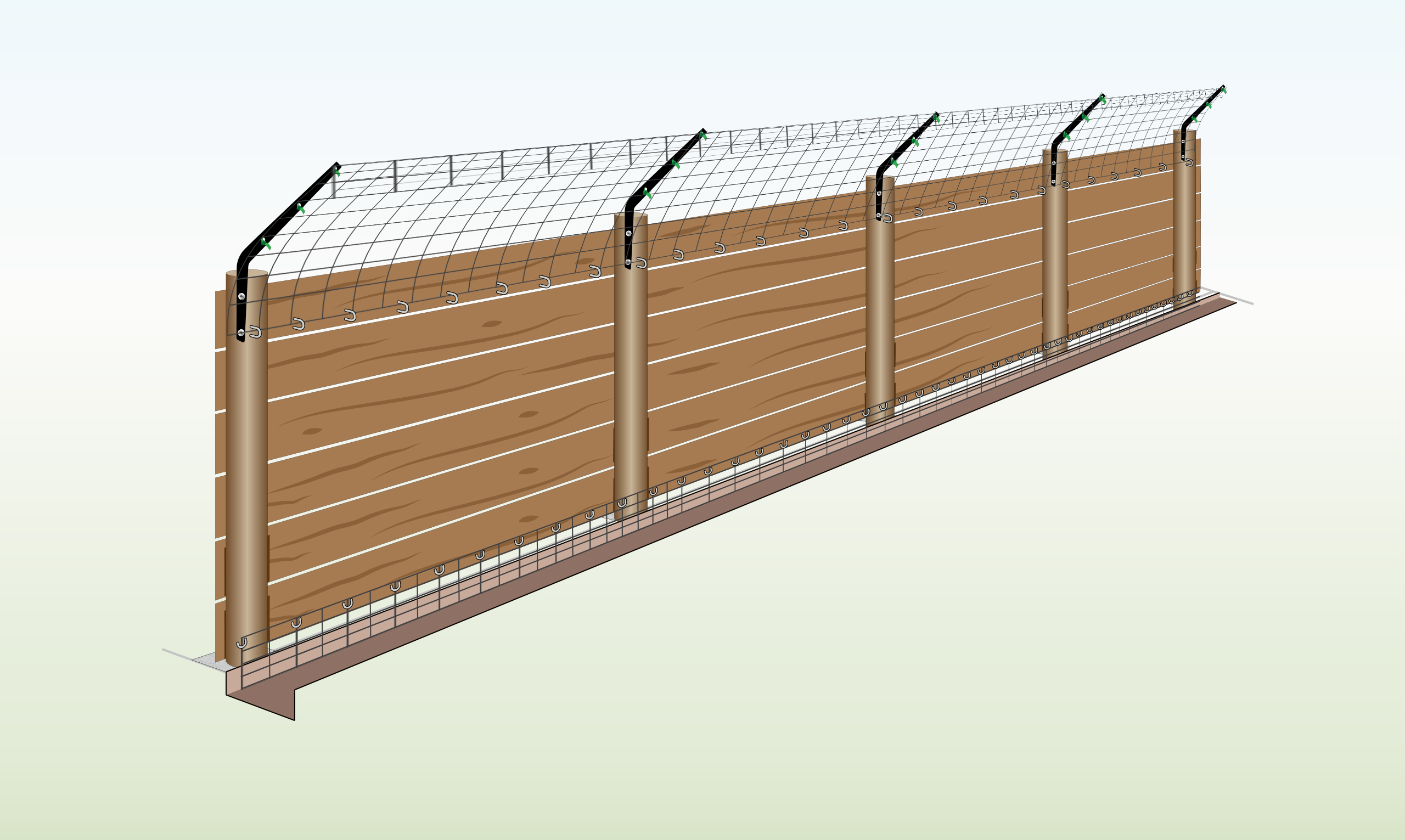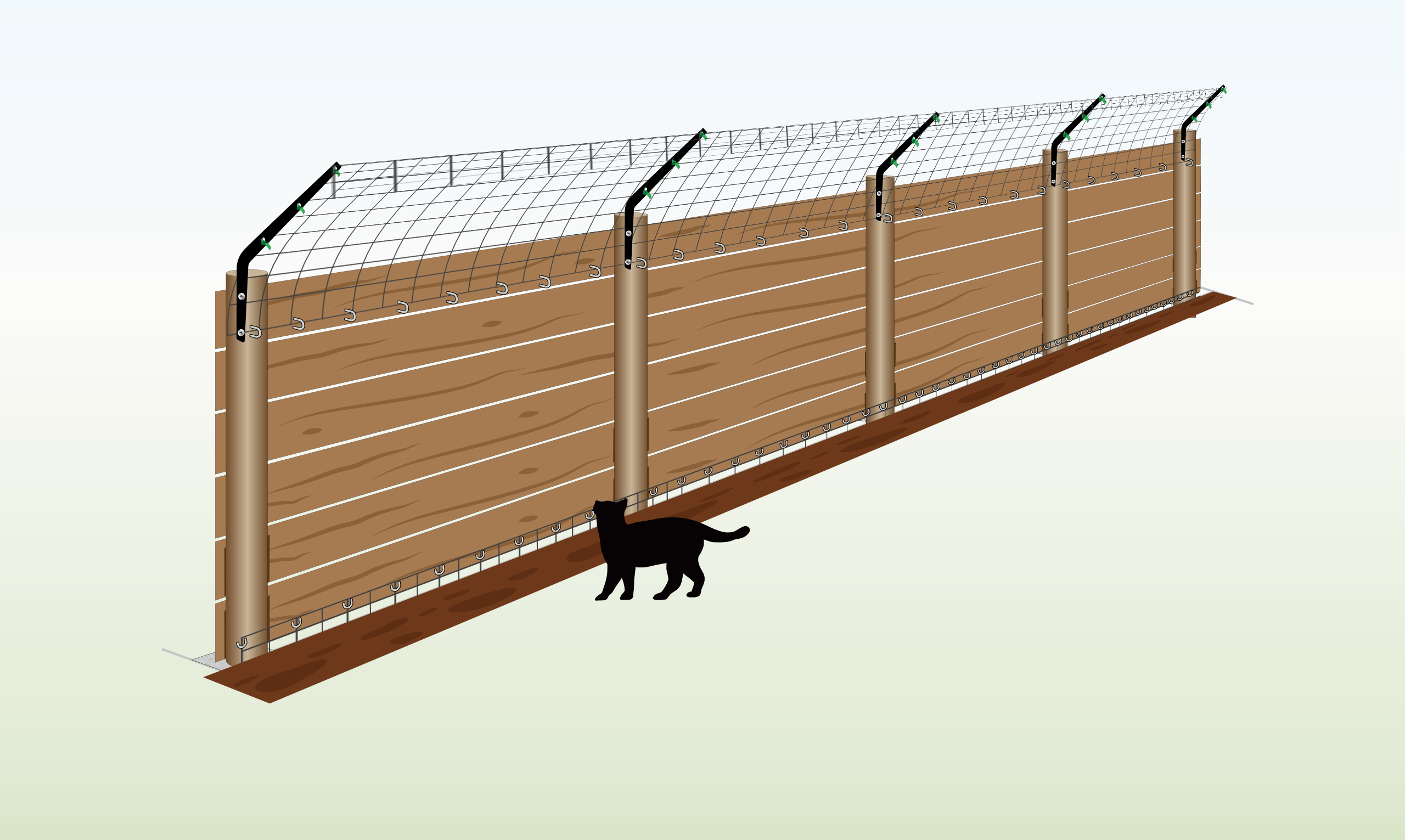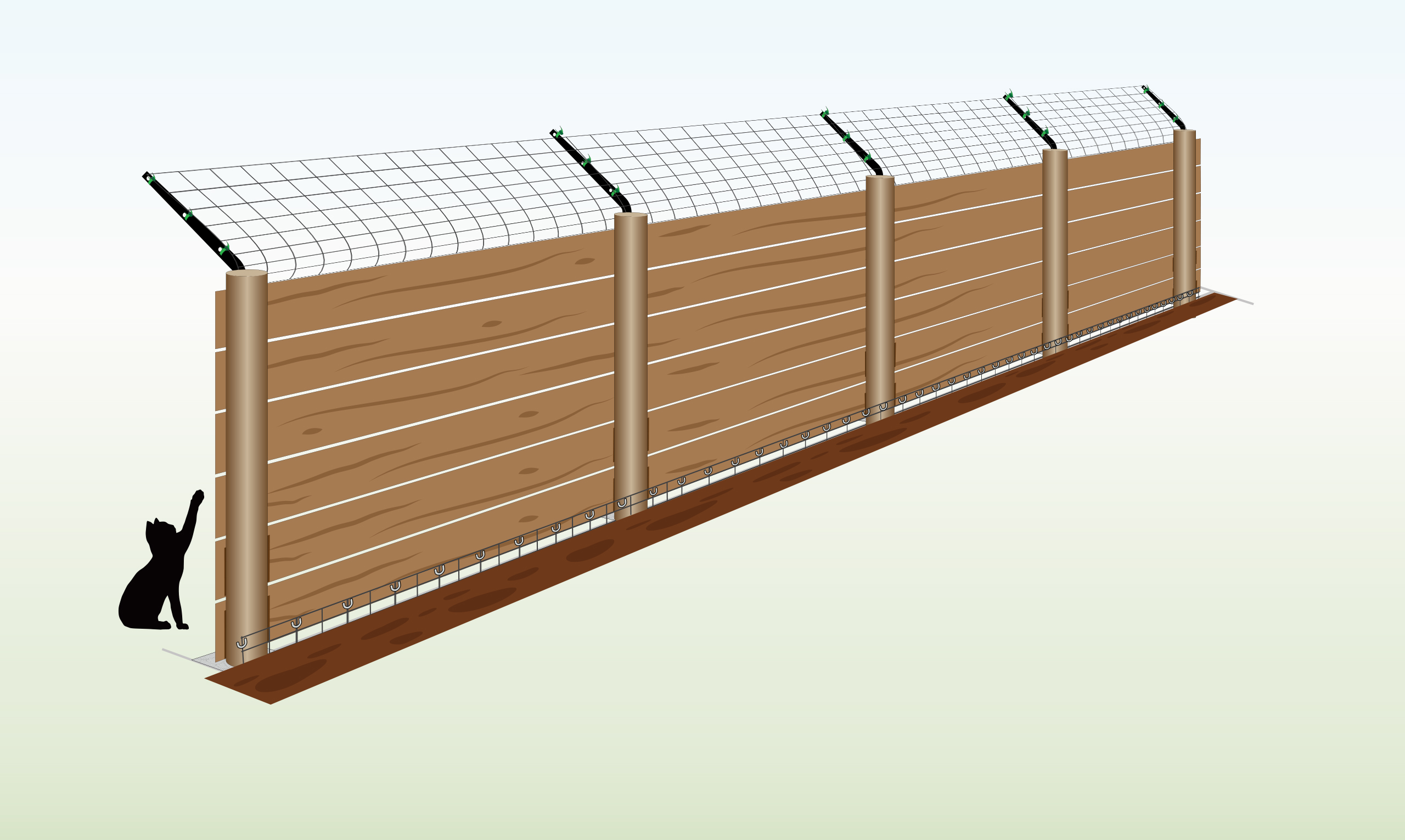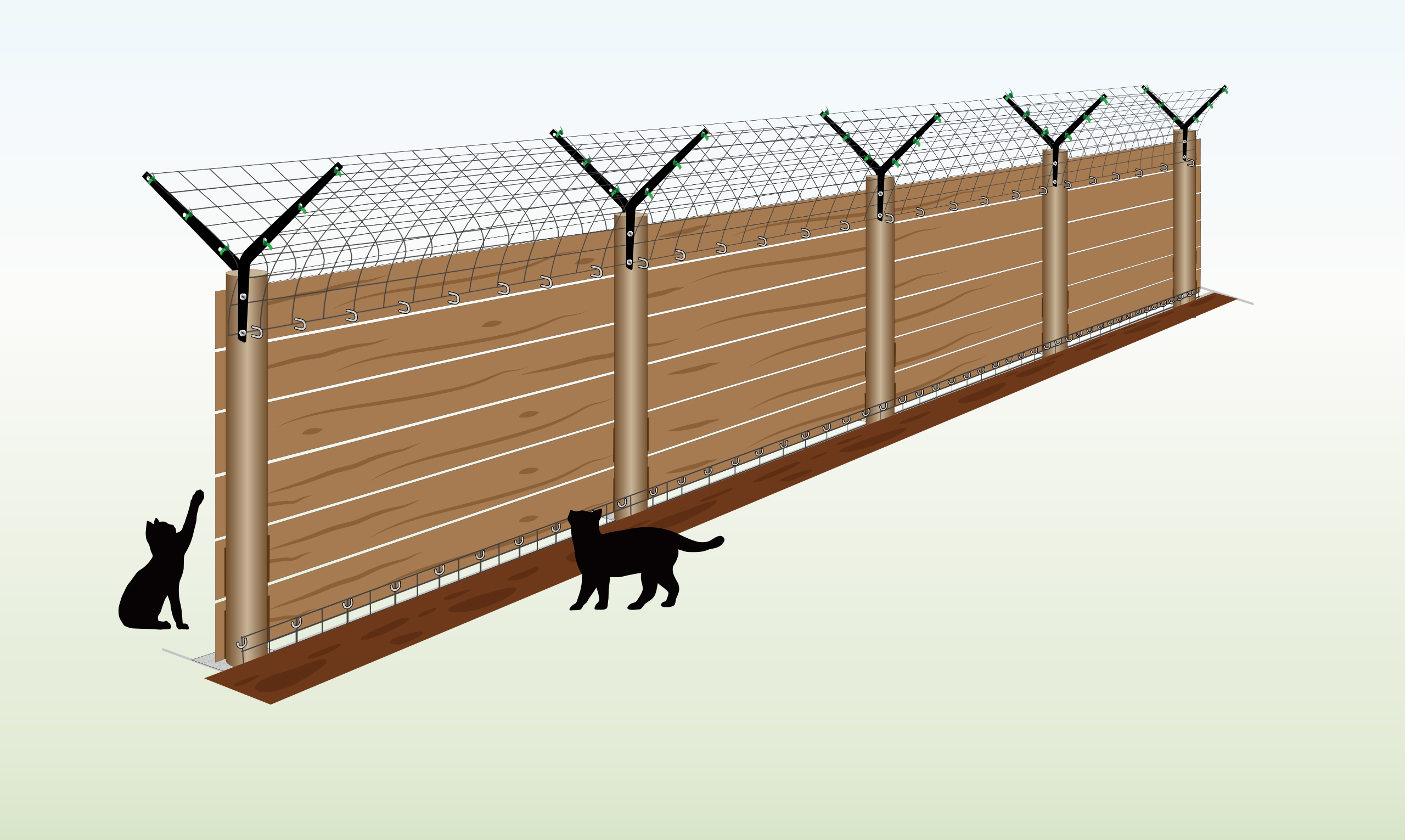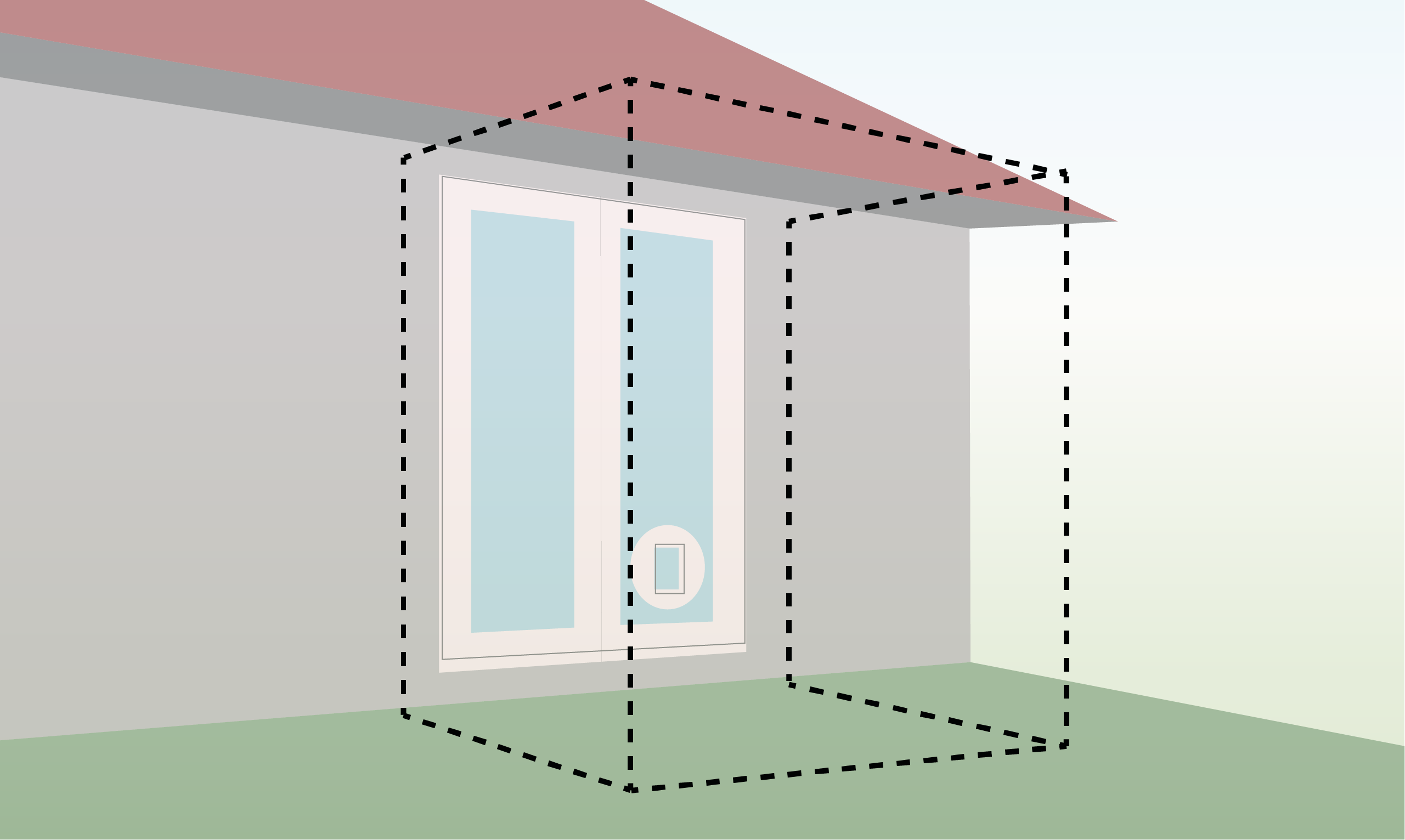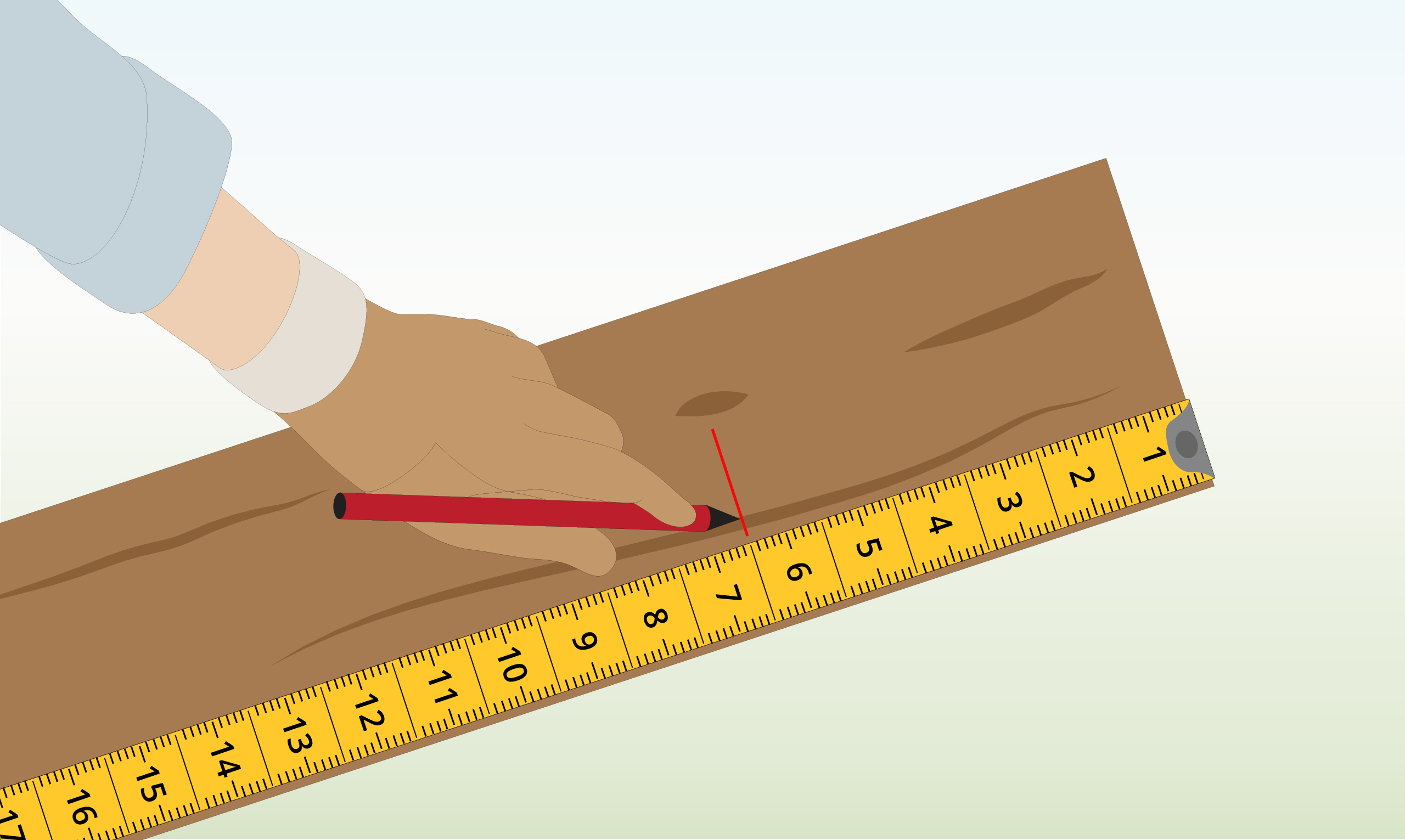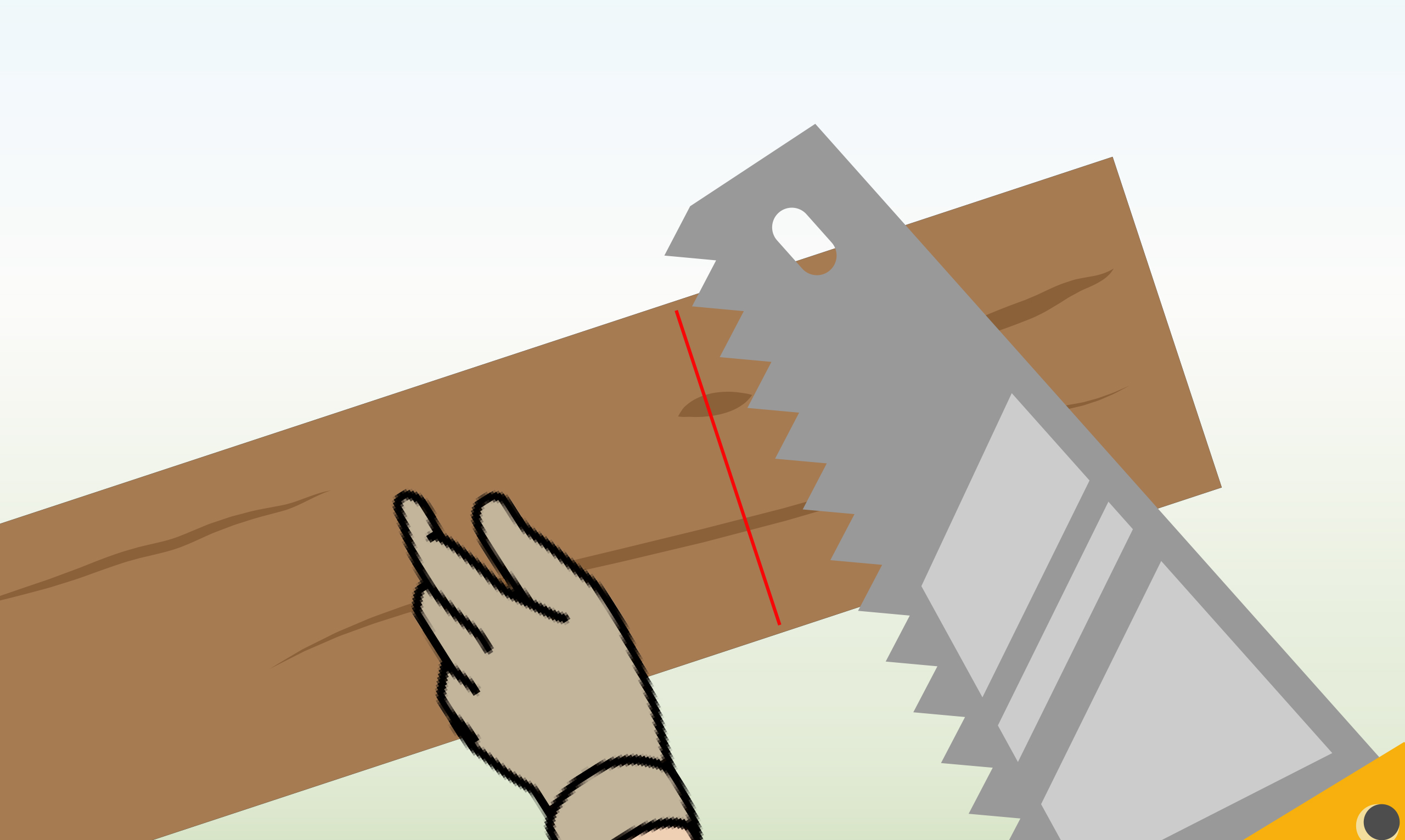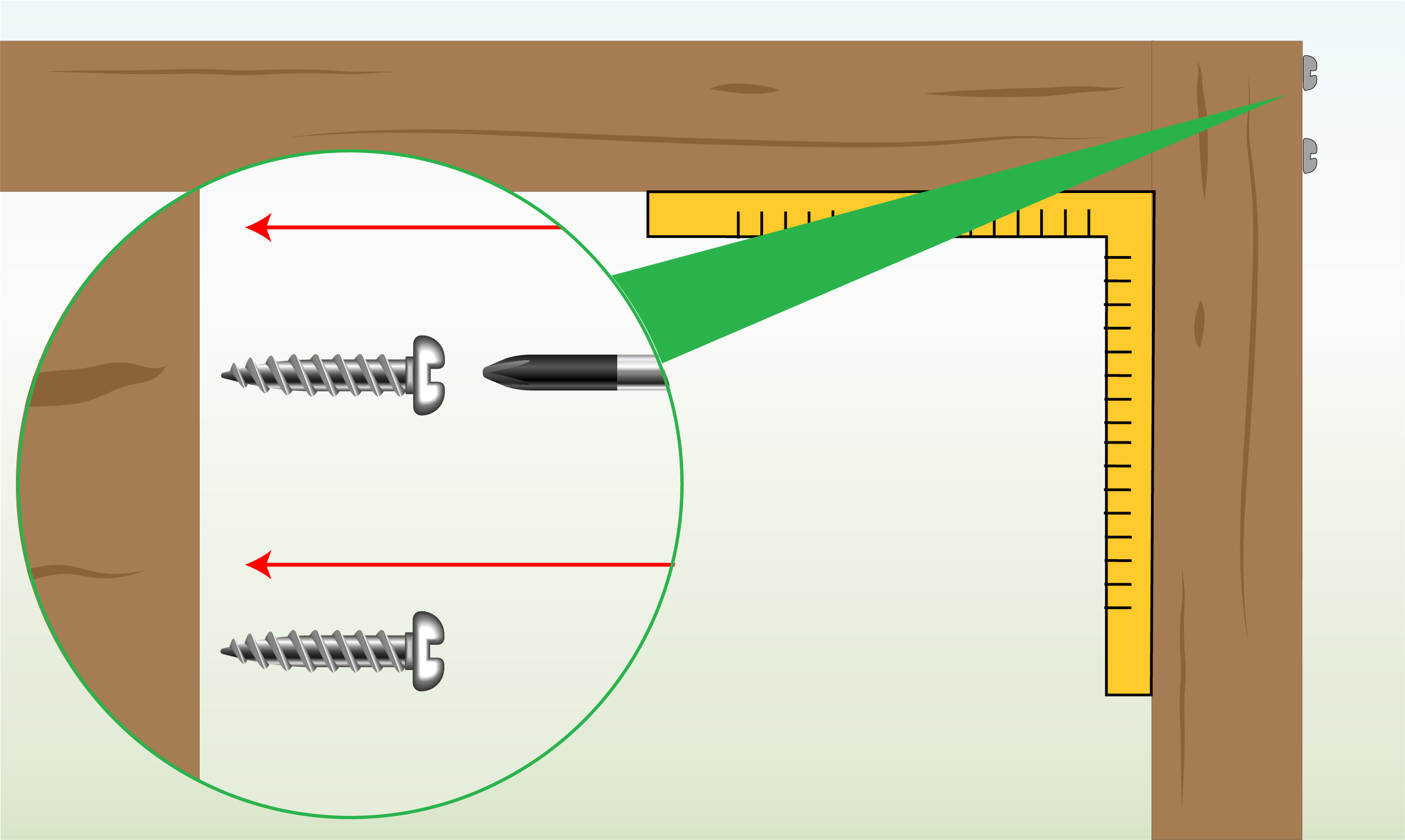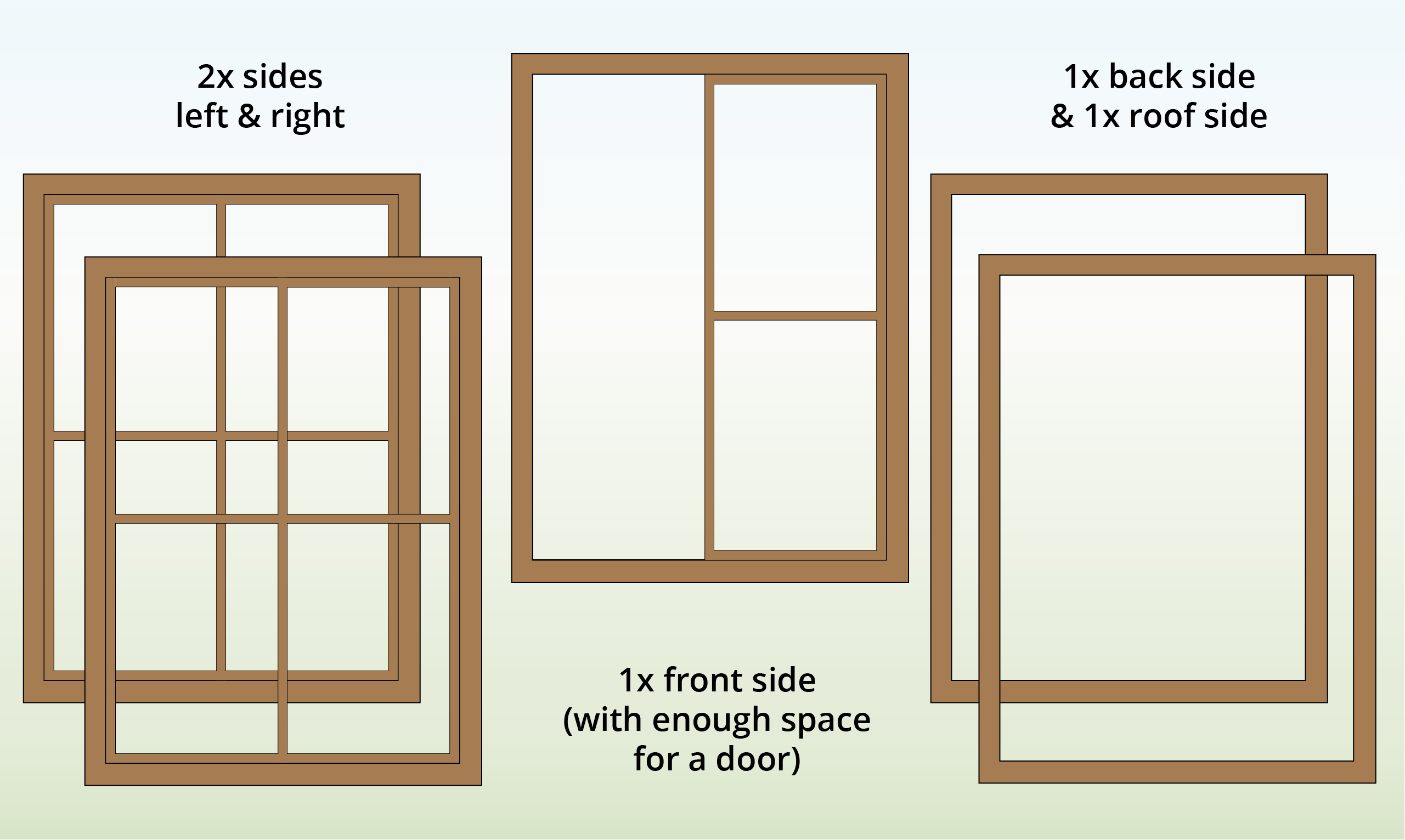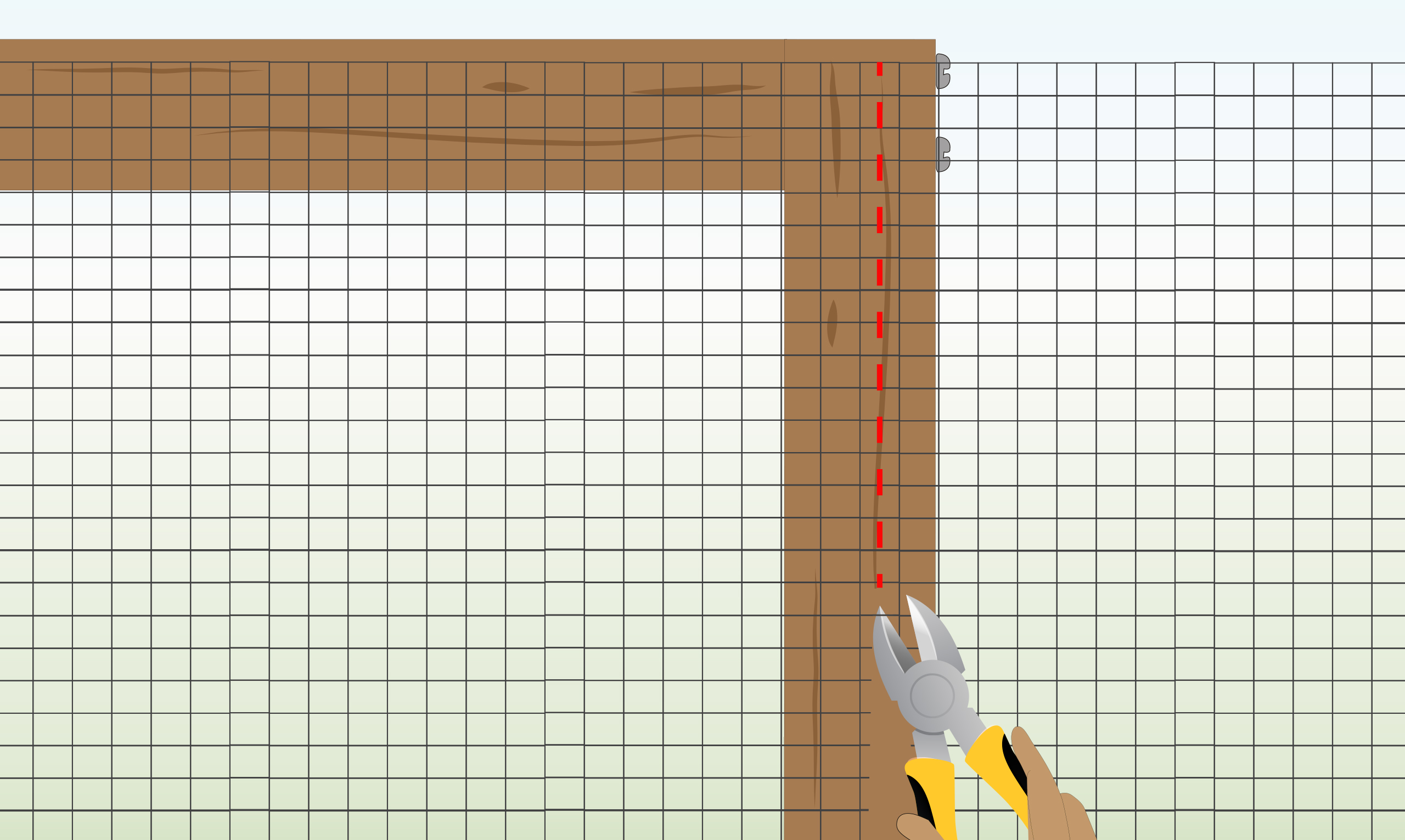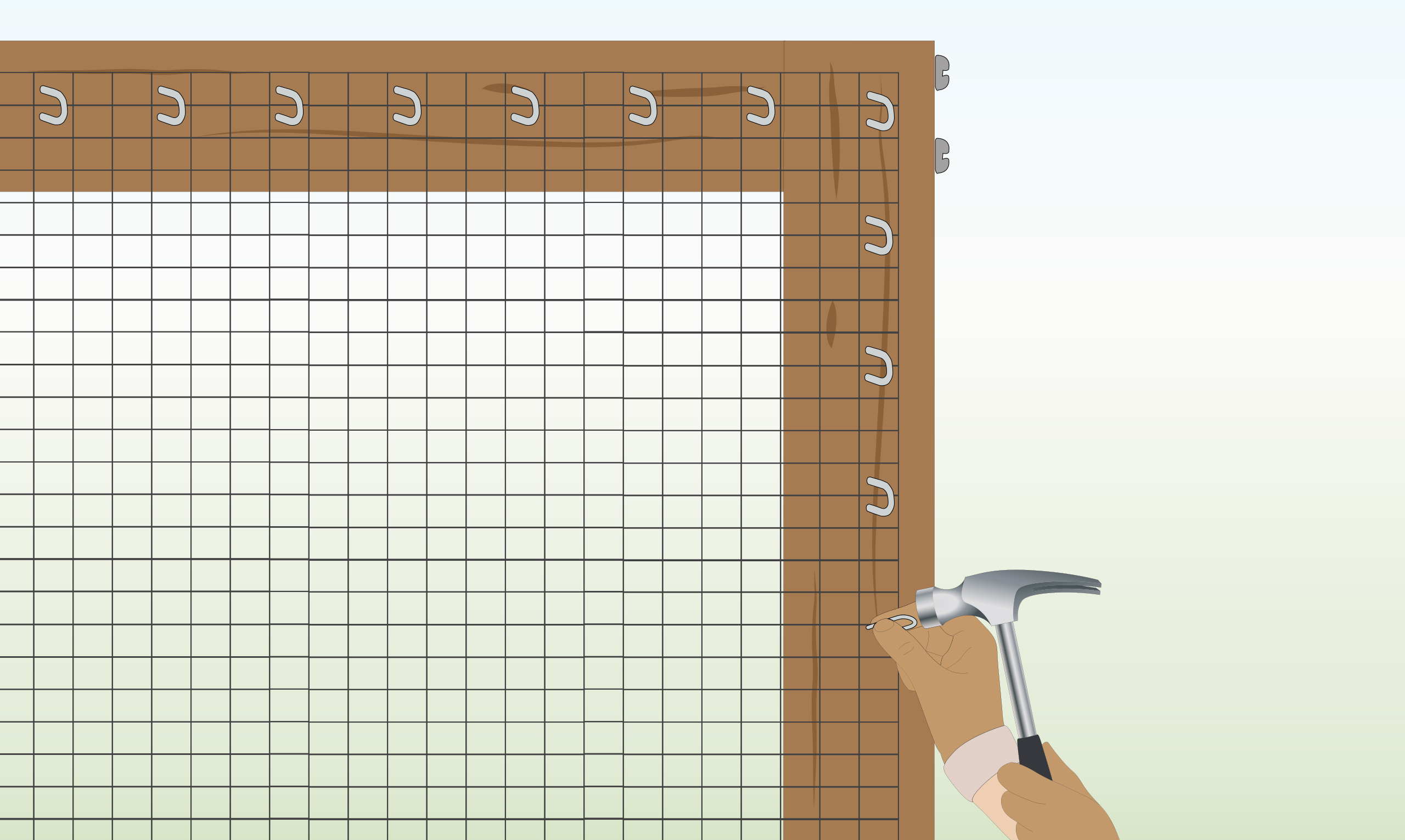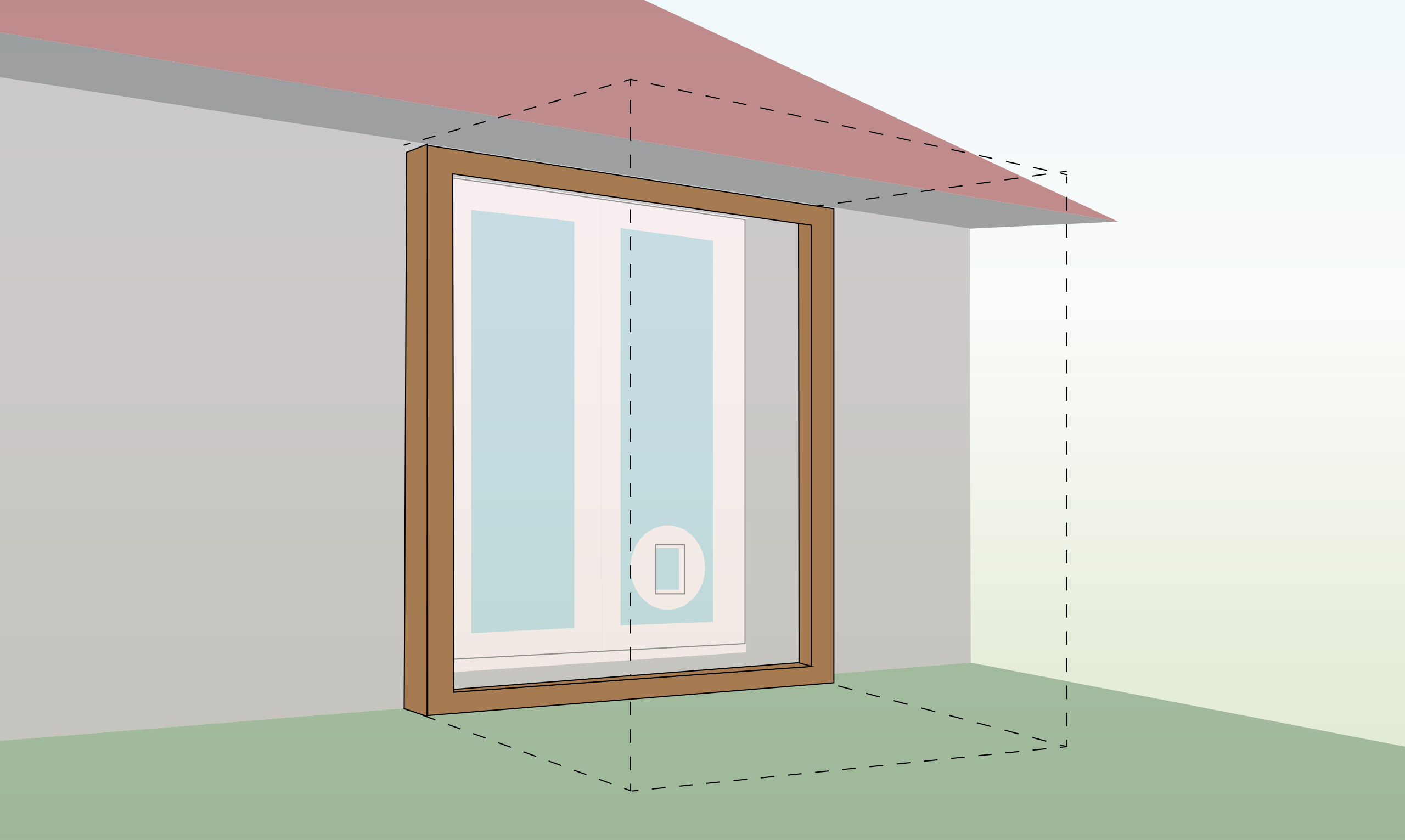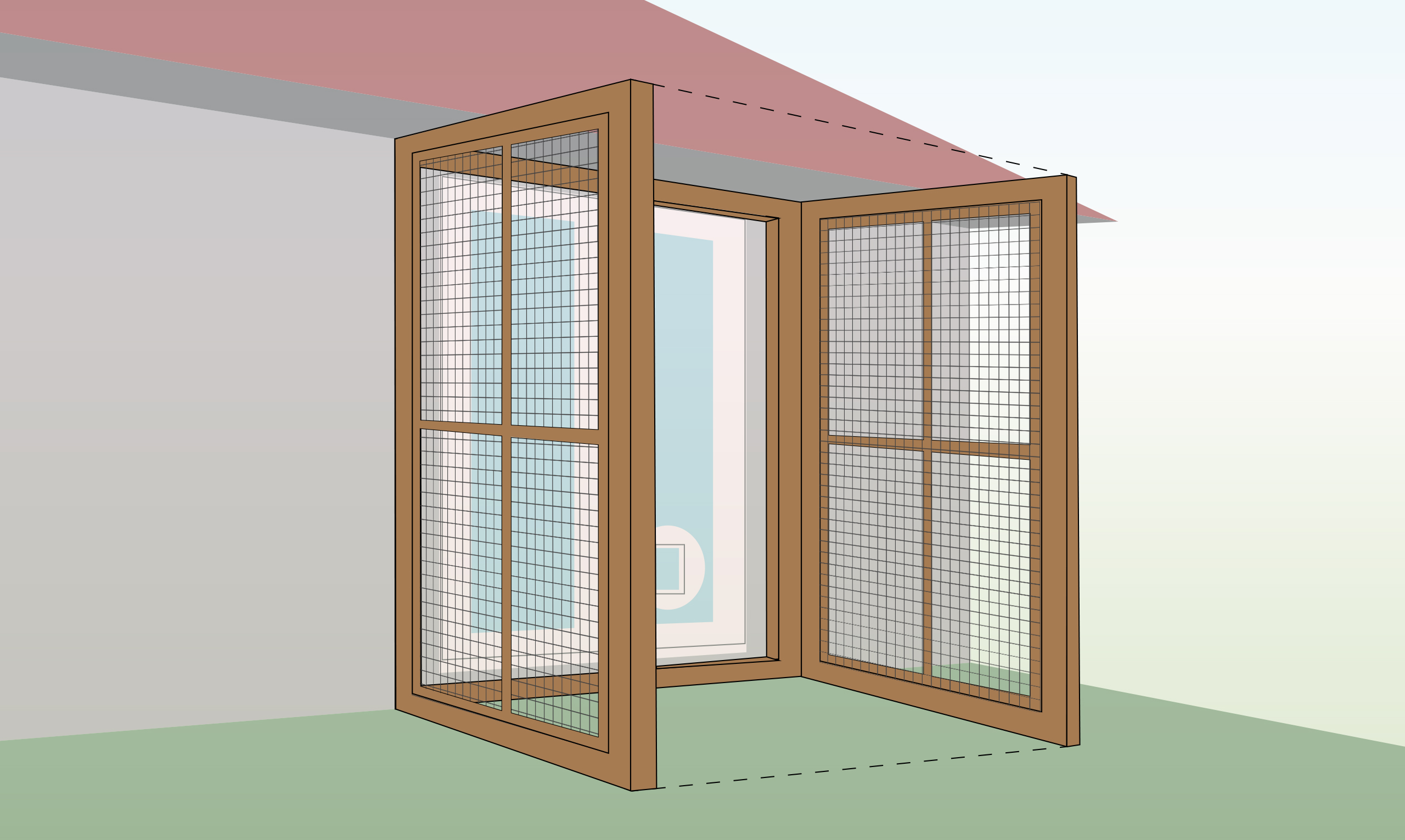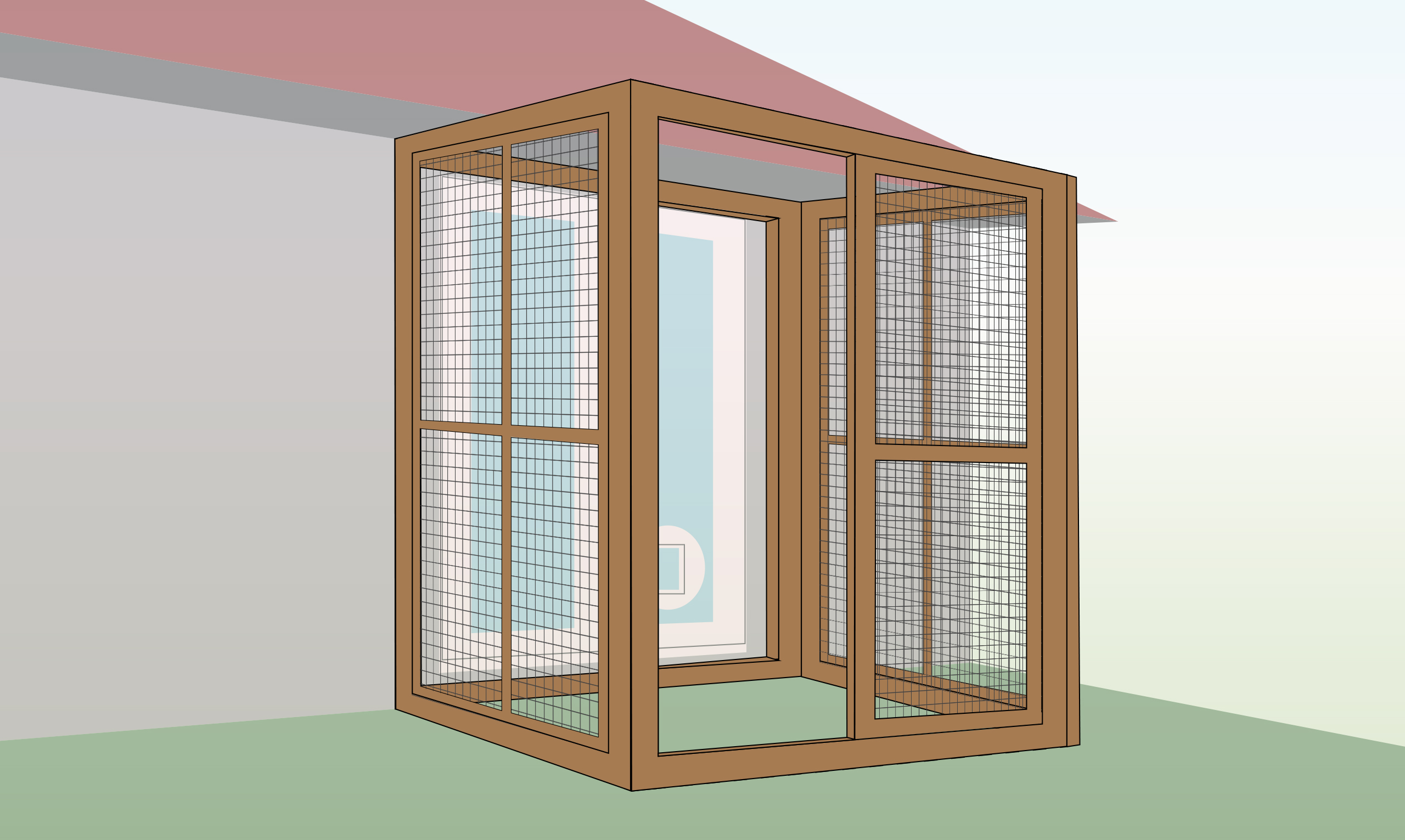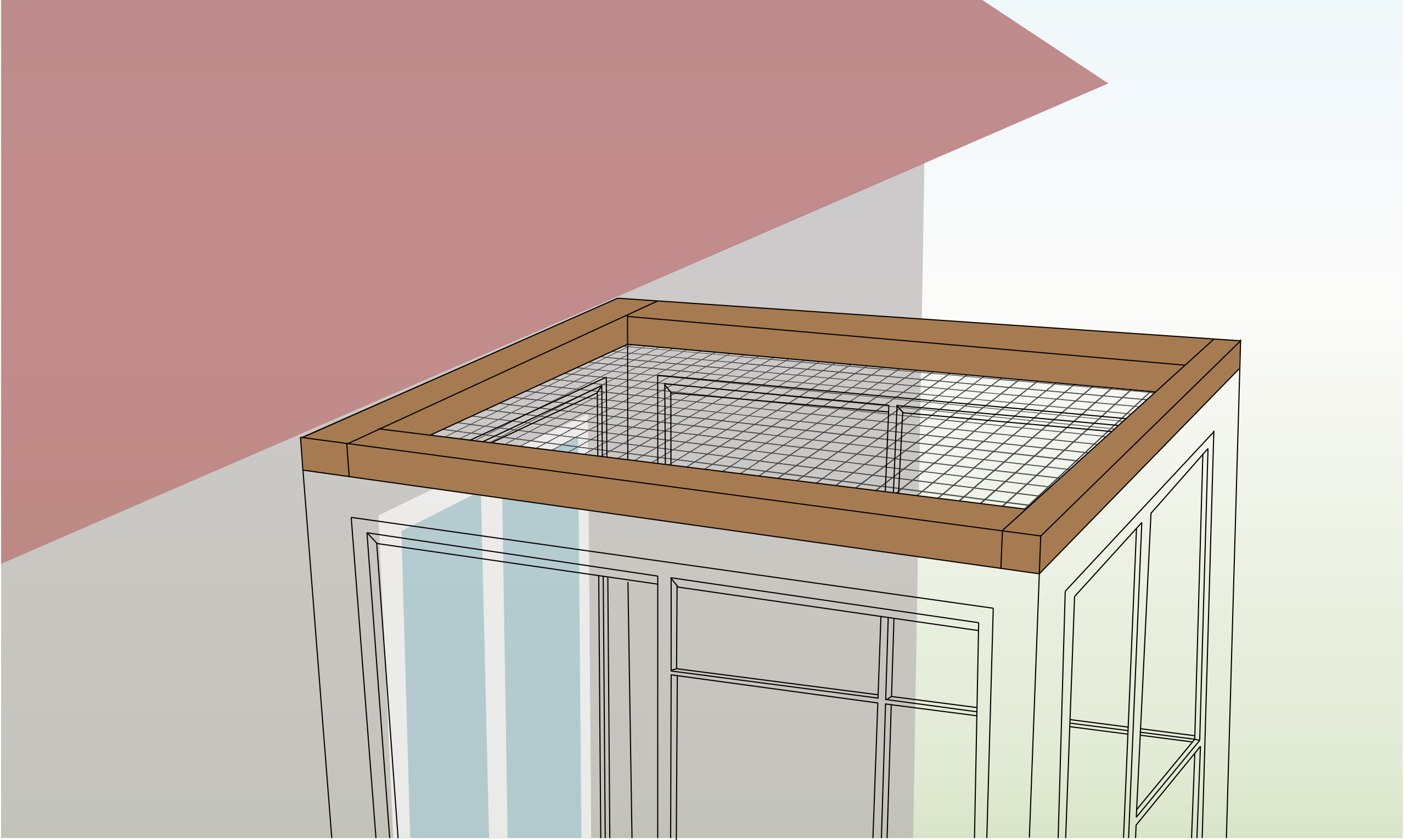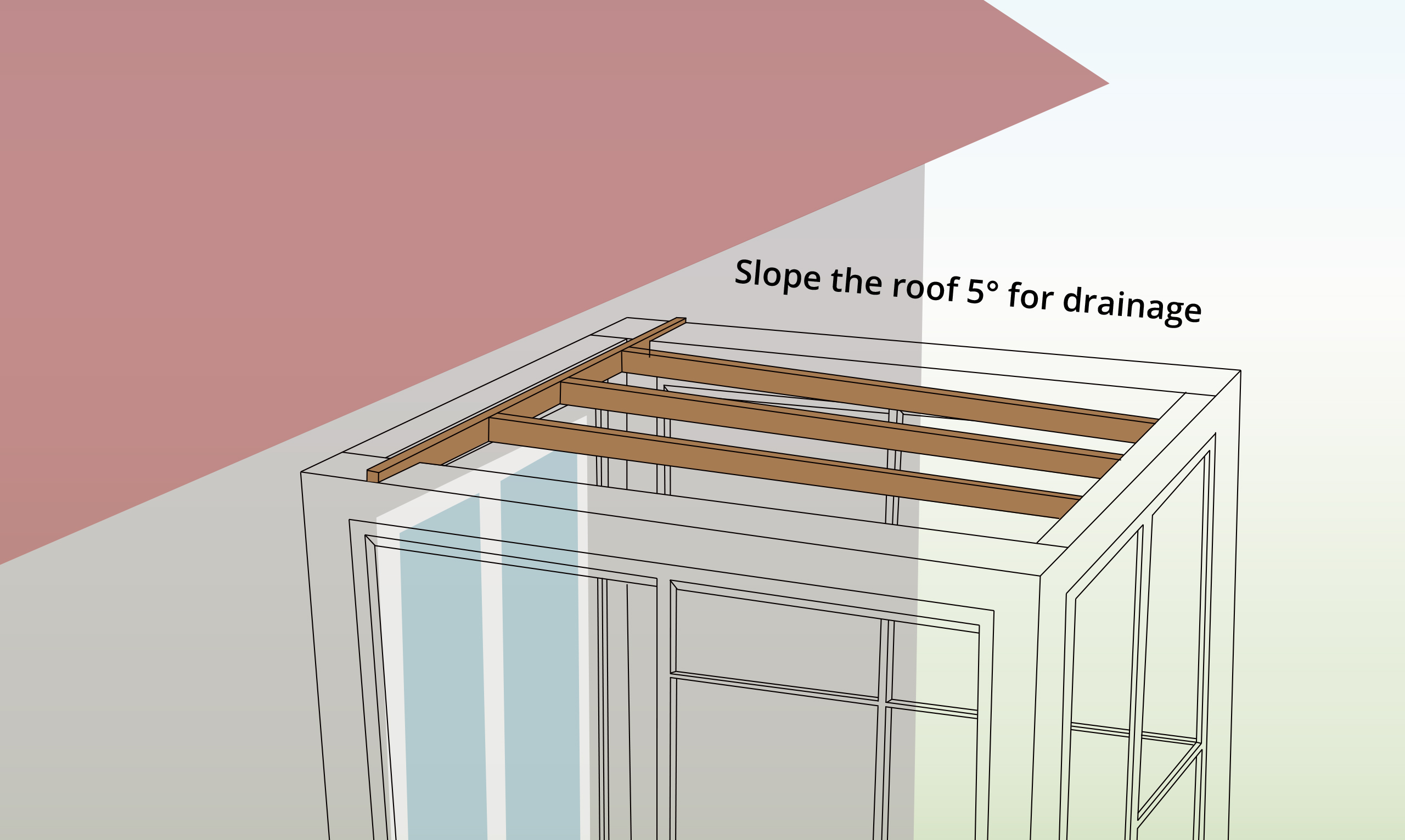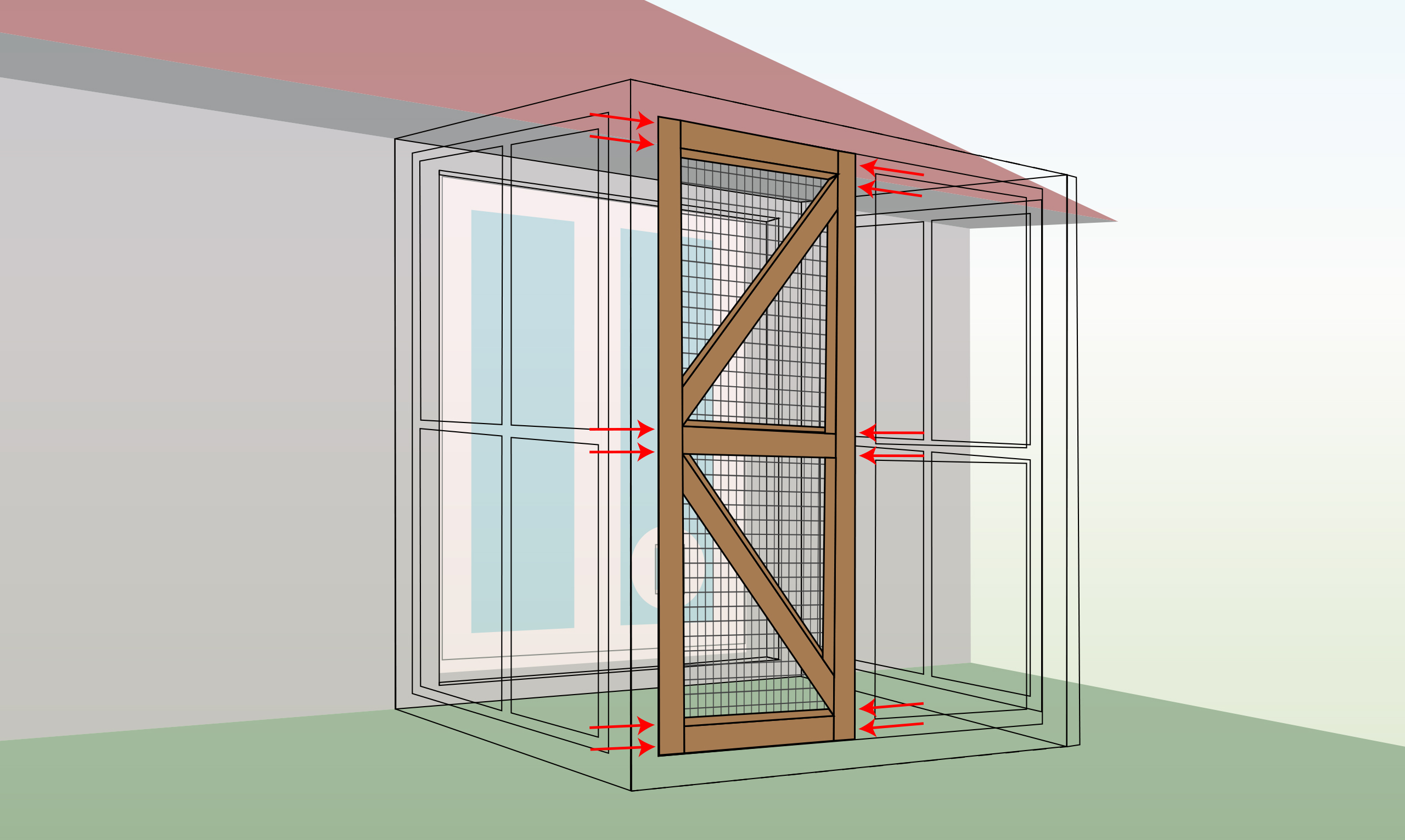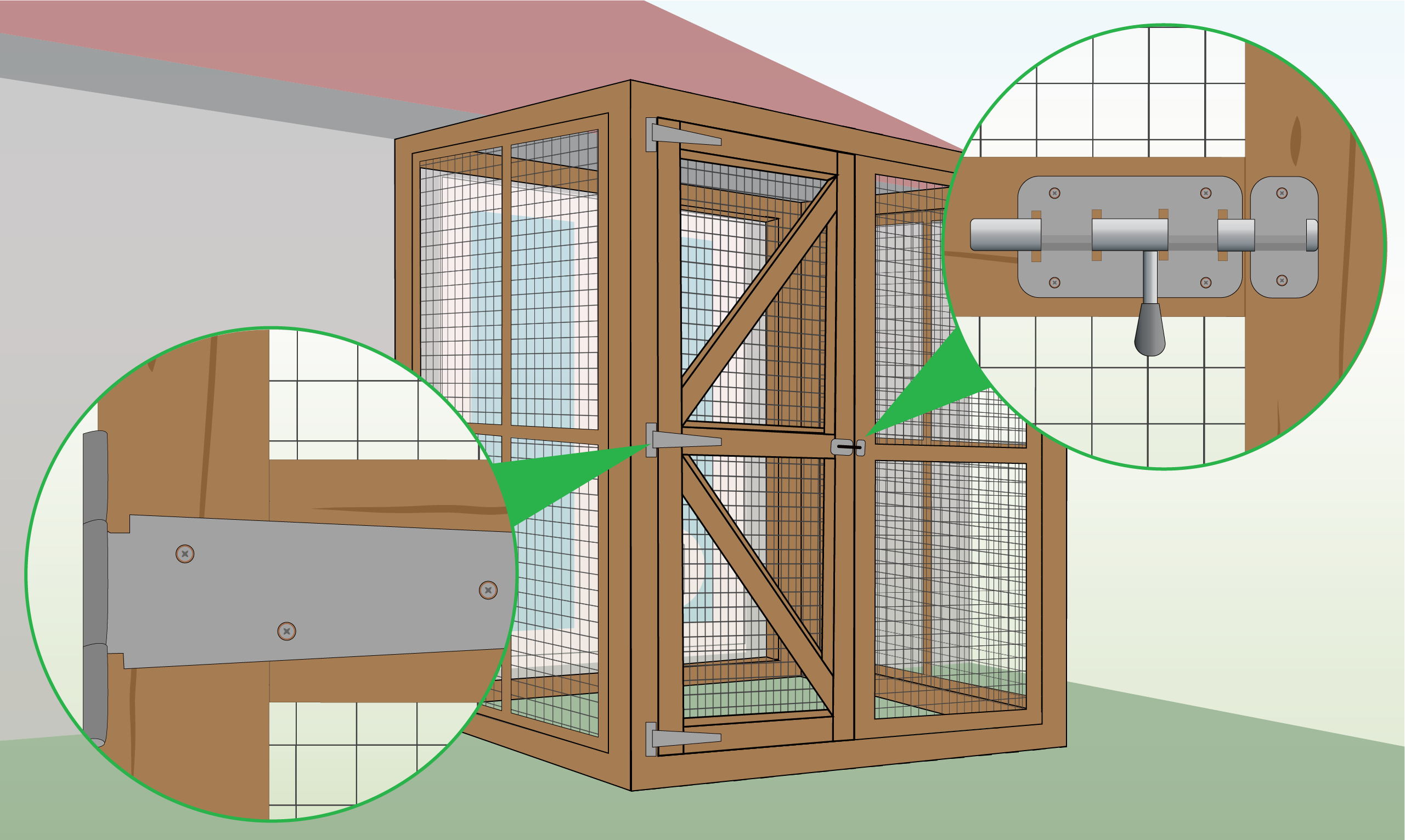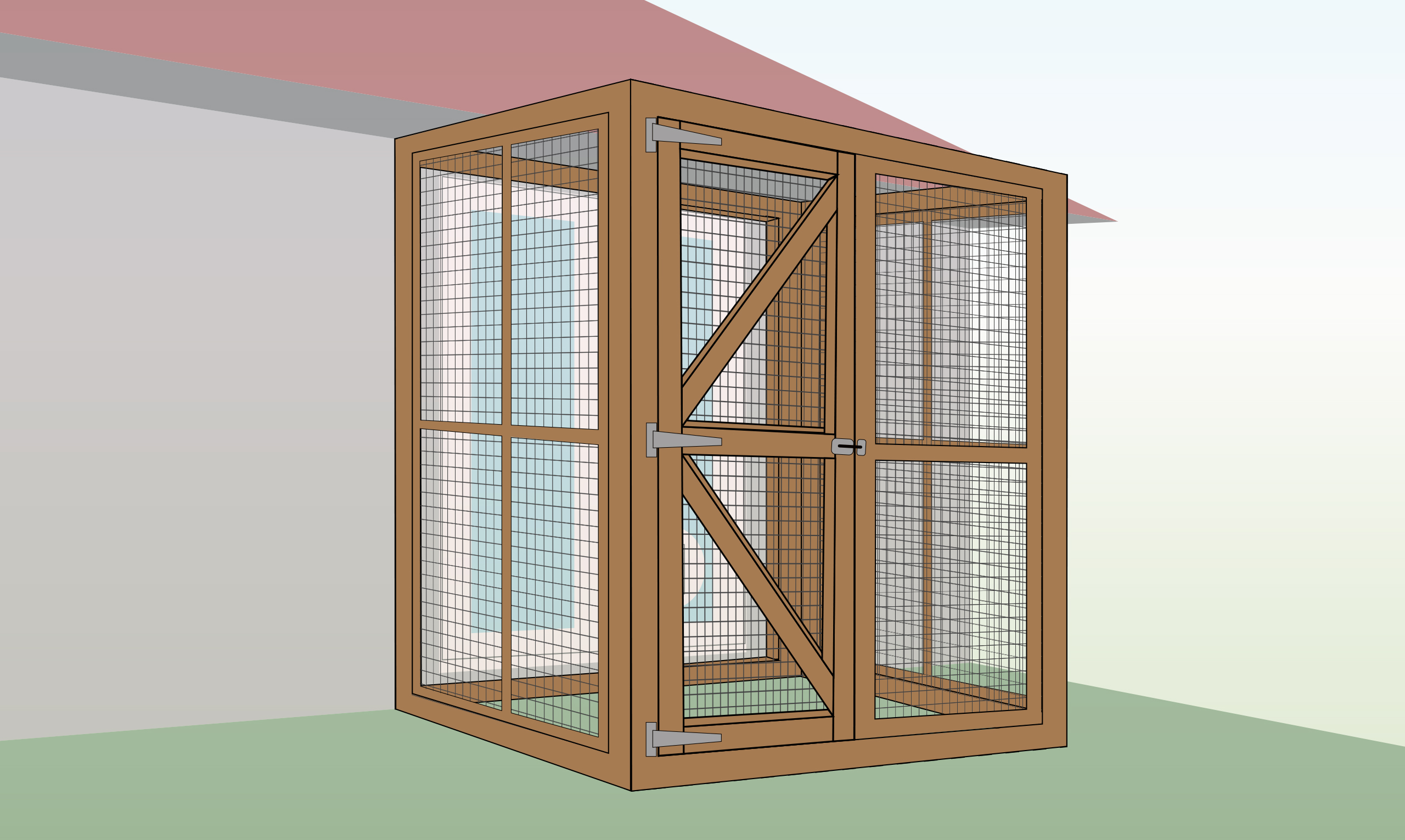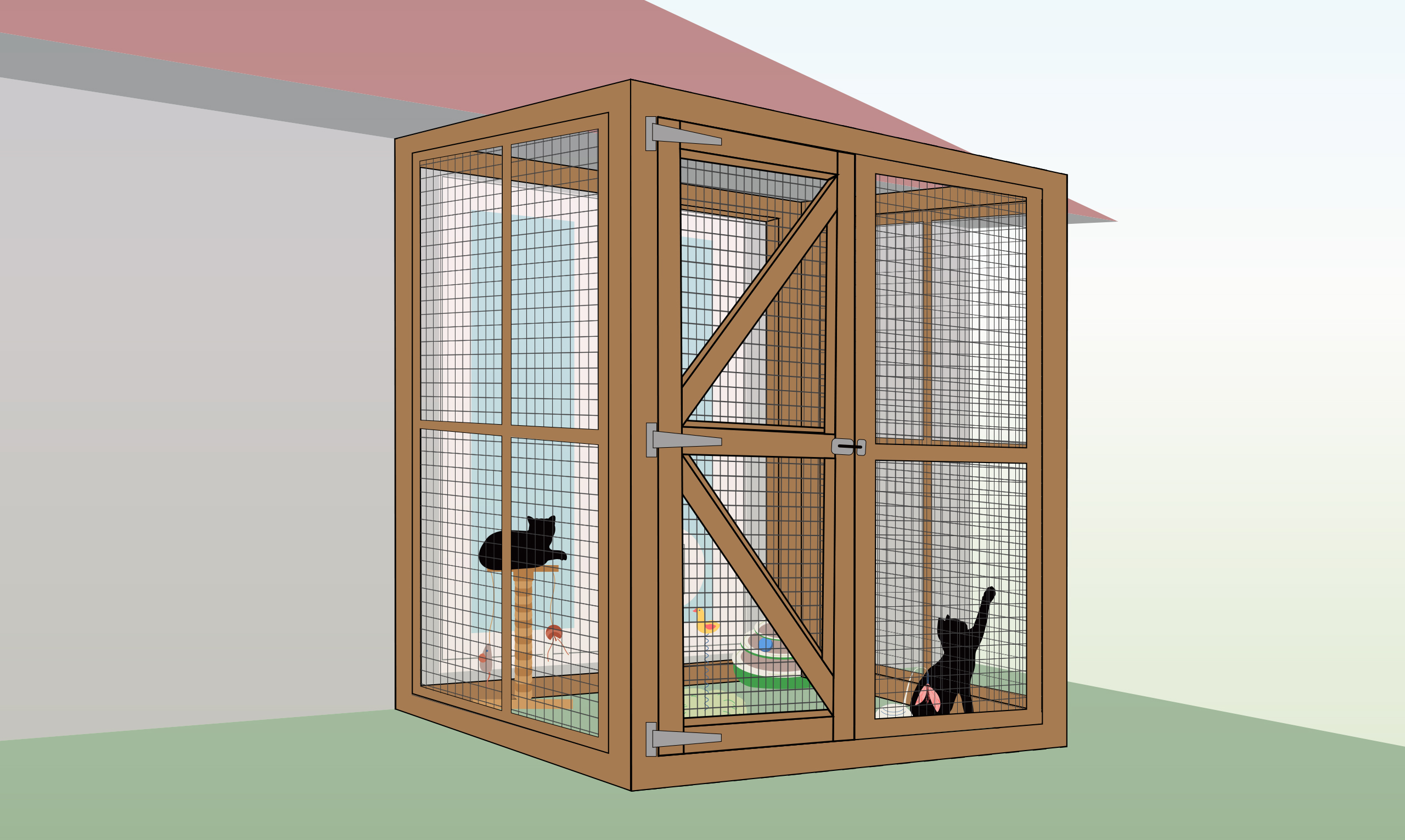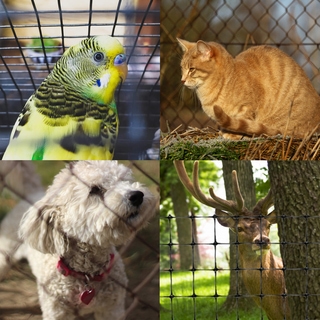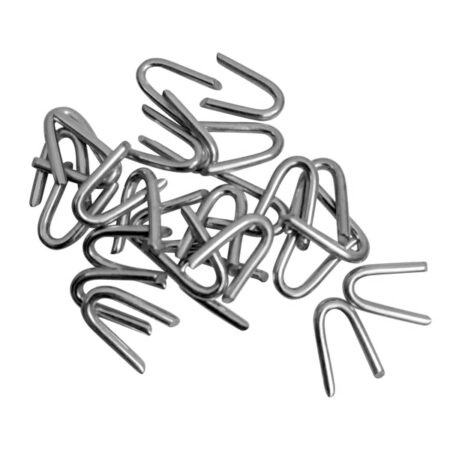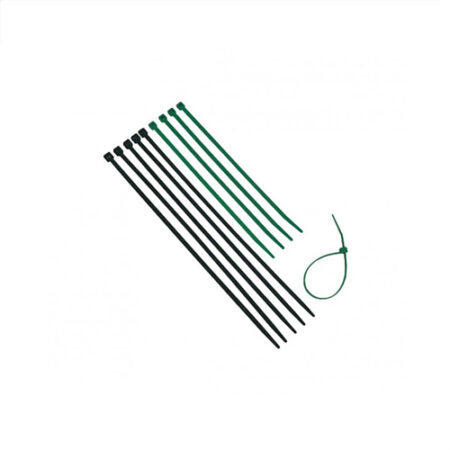Cat Fence & Cat Enclosure Netting
Keep your cat safe. Protect it from busy roads and stop it straying into neighbour’s garden.
Customer Images
Cat Fencing Information
- Cat Enclosure Netting: Used to stop cats from getting in or out of your garden. Made from semi-rigid, HDPE plastic, it can be easily handled and shaped in to place.
- Cat Cage Mesh: Strong economy welded wire mesh to construct DIY cat cages. SUPER PRIME mesh available used by commercial catteries as it has a safer smooth finish.
Installation Instructions
With T Posts
Existing Fence
Catio
| To Do | Explanation |
|
Step 1 – Mark the Location
|
Mark the fence line between the two end posts. |
|
Step 2 – Mark Post Distance
|
Mark the post locations, maintaining a 1.8m-2m spacing between them. |
|
Step 3 – Install End Posts
|
Use a post driver to push the end posts into the ground to a depth of 50cm. If you don’t have a post driver, you can also use a mallet.
Make sure the posts are straight and facing in the same direction. |
|
Step 4 – Check for Equal Height
|
Use a tape measure to check if the height of your end posts is equal.
Then, pull a string across their top, which will help you keep the intermediate posts at the same height. |
|
Step 5 – Check for Straightness
|
Make sure the posts are straight by using a spirit level. Adjust gently if necessary. |
|
Step 6 – Set in Concrete (Optional)
|
For a stronger fence, set your posts in concrete.
This involves digging a 50cm hole and pouring concrete into it, then placing a post in the middle, making sure it’s straight and facing in the correct direction. |
|
Step 7 – Install Intermediate Posts
|
Follow steps 3-5 to install the intermediate posts.
They should all be straight and facing in the same direction.
If you want to make your fence even stronger, you can use concrete to secure the middle posts as well. |
|
Step 8A – Side-Angle Brackets
|
You can use angled fence brackets with a min. 45 degree bend or anything up to 90 degrees, like simple shelf brackets.
Brackets that are angled to the side can be attached to the large hole at the top of the posts. A washer may be required if the bolt’s head is too small for the hole. |
|
Step 8B – Wide Front-Angle Brackets
|
For any brackets with a width larger than 2cm, you will need to drill a hole on both sides of the fence post and of the bracket, so that they align.
Then, connect them on both sides with bolts and nuts. |
|
Step 8C – Narrow Front-Angle Brackets
|
For narrow shelf brackets or anything up to 2cm in width, choose a side to connect the brackets to.
The holes will be drilled into that side, then aligned with the pre-drilled holes in the bracket.
To secure them together, use bolts & nuts. |
|
Step 9 – Measure & Mark Where to Drill
|
Take your fence or shelf brackets, measure where you want to connect them to the fence posts and mark the spots where you’ll need to drill.
Note: Skip this step if you have side-angled brackets as they require no new drill holes. |
|
Step 10 – Drill Holes
|
Drill holes where you marked the spots previously.
Note: Skip this step if you have side-angled brackets. |
|
Step 11 – Attach First Bracket
|
Take a bracket and align the pre-drilled holes, then push through a bolt and tighten it with nuts.
Test it so that it’s securely attached and make sure the overhang is facing inwards.
Note: Skip this step if you have side-angled brackets. |
|
Step 12 – Attach Remaining Brackets
|
Repeat step 11 with the rest of your posts and brackets. |
|
Step 13A – Choose Mesh Height
|
The height of the mesh roll should cover the overhang, as well as provide extra protection at the end of it and below ground level.
Note: You can use a shorter fence and attach the top overhang with cable ties. |
|
Step 13B – Alternative Without Digging
|
If you want to skip having to dig a trench, you don’t need to account for the extra protection underneath ground level.
However, you will need to use pegs at 15cm distances to stop cats from pushing underneath the fence. |
|
Step 14 – Dig Trench
|
Dig down to a 10cm depth along the fence run. You will need to sink a section of the fence below ground level to stop cats from pushing under the fence line.
Alternative: Skip digging and use pegs later. |
|
Step 15 – Start Unrolling Mesh
|
Sink the mesh roll’s bottom into the trench, then start gently unrolling it and making a fold by hand where the brackets have the bend.
It helps to have another person holding the beginning of the roll so it doesn’t jump back to its rolled up position. |
|
Step 16 – Secure Mesh to First Post
|
Start at the first post and attach the mesh to it with cable ties.
These should be threaded through the existing holes in the post or tied around the entire post. |
|
Step 17 – Attach Mesh to First Bracket
|
Thread cable ties through the pre-drilled holes of the brackets and attach the mesh at every hole.
You can also add more ties and encircle the entire bracket if there are less holes than required. |
|
Step 18 – Attach Mesh to Posts & Brackets
|
Secure the remaining length of mesh by repeating steps 15-17 as you move along the fence run. |
|
Step 19 – Hide the Trench
|
Cover the trench you created previously with the soil you dug up. |
|
Alternative – Outward Facing Overhang
|
The brackets should face in the direction you need to cat-proof the area from.
You can use the same instructions to keep neighbouring cats from entering your garden, just make sure the brackets and the overhang are facing outwards. |
|
Alternative – Two-Direction Overhang
|
You can double up the brackets and create an overhang facing in both directions.
This will create a two-way cat-proof fence, stopping foreign cats from coming into your garden while also keeping your own cat(s) within the yard. |

